
The orchids of Peru are a priceless treasure of Amazonian flora, their dazzling variety and their adaptation to the unique habitats of this region make them a natural wonder that must be appreciated and protected. Through responsible conservation and the promotion of sustainable tourism, we can ensure that these exquisite flowers continue to delight future generations. Peru stands out for being home to a wide variety of orchids. These flowers, with their exquisite shapes and colors, have captivated botanists and hobbyists for centuries. It is estimated that more than 3,000 species of orchids are found in Peru, many of them endemic and unique to this region. From tiny orchids to majestic specimens, the diversity of shapes and sizes is simply astonishing.
Peru’s geographic location and climatic conditions create an ideal environment for the growth and proliferation of orchids. The combination of abundant precipitation and warm temperatures throughout the year favors its development in cloud forests and transition areas between high and low forest. The preservation of Peru’s orchids is a fundamental concern. These floral jewels face multiple threats, including the destruction of their natural habitat due to agricultural expansion and illegal logging. Additionally, illegal orchid trafficking is a constant concern. To protect these species and guarantee their survival, protected areas and national parks have been established, such as the Alto Mayo Protection Forest, where the conservation of biodiversity and the orchids of Peru is promoted.
Since ancient times, man has been fascinated by this group of plants. The origin of the word orchid is proof of this, as it comes from two Greek words: opixs=testicle and erdos=form. That is, this word refers to the resemblance of the testicles to the underground bulbs. Also for this reason, many species of orchids were used to influence man’s sexual activity. All orchids belong to the Orchidaceae Family. This Family is one of the groups with the largest number of species in the world. It is estimated that it includes between approximately 30,000 and 35,000 species. Orchids are found almost all over the world. Only in the polar regions, these have not been recorded. They can live in many types of ecosystems, from the highest punas to near the sea. However, the largest number of species has been recorded in the mountainous regions of the world, between 1,000 and 2,000 m.
Orchids generally have flowers that are both female and male (hermaphroditic flowers), but there are some genera that have unisexual flowers. Generally, fertilization does not take place between the two sexes of the same flower, but rather, the male sexual cells are transported to the female organs of a different flower. This process is called pollination. Orchid flowers have bilateral symmetry, this means that, to obtain two equal parts, they must be cut in the center from top to bottom. In comparison, the vast majority of flowers have radial symmetry, that is, to obtain two equal parts, you can cut them anywhere.
It is known that there is specificity in the pollination of orchids, this means that there are many species of orchids that are pollinated by a particular insect or bird. Each species of orchid has different ways of attracting and rewarding its pollinator. Some species offer nectar, others offer oils that insects use as perfumes, among other ways to ensure pollination. Although very interesting cases of orchid pollinators are known, in reality, most pollinators are not known. And in the case of Peruvian orchids, very little is known about this process. So, for example, bees pollinate many species of orchids, which are generally fragrant during the day and have labella that function as a landing strip for bees. Both characteristics attract pollinating agents, therefore, this adaptation increases the chances that the orchid will be pollinated by bees or other insects.
Another group of insects that pollinate orchids are butterflies and moths. Those that are pollinated by butterflies are generally brightly colored and do not have nectar to offer as a reward. Flowers that are pollinated by moths are usually white or green and emit various odors during the night. Flies also pollinate some species of orchids. These generally have small flowers that give off odors similar to excrement. Likewise, birds pollinate orchids that, in general, do not have odors, but instead have nectars that are consumed by birds. All these characteristics make orchids a botanical group that can occupy almost all existing habitats. This situation explains its high diversity on the planet.

Orchids are characterized by being herbs, and can be epiphytic, lithophytic or terrestrial. The roots are fasciculated (bunch) and in the vast majority of tropical species they have a veil. Their growth habits are very varied and can be separated into two groups: epiphytes and terrestrials (including lithophytes). In tropical areas, most orchids are epiphytes and the vast majority of them have very showy flowers, while those in temperate areas are terrestrial and have unattractive flowers. Its flowers present great diversity in colors, shape, size and smell, which are evolutionary characters conserved with the sole purpose of attracting pollinators, which are mostly insects, which in many cases are specific for certain species.
The seeds are very small and are produced in thousands and even millions for each fruit. Another peculiarity of orchids occurs in the roots, which are completely covered by a spongy, creamy white tissue called velamen that allows for high moisture uptake and retention. Peru has a great diversity (richness) of orchids, present in the departments of Junín, San Martín, Cusco, Huánuco, Amazonas, Pasco, Huancavelica, Cajamarca, Madre de Dios, Ayacucho, Lima, La Libertad, Puno, Ucayali and Loreto .
This enormous diversity of species, with their range of shapes, sizes, aromas and colors, places the Orchidaceae as one of the most complex botanical families to catalog and evaluate. Of the total orchid species found in the country, 301 are categorized as threatened. Of them, there are 62 species of orchids in the Critically Endangered (CR) category, 19 in the Endangered (EN) category and 220 species in the Vulnerable (VU) category.
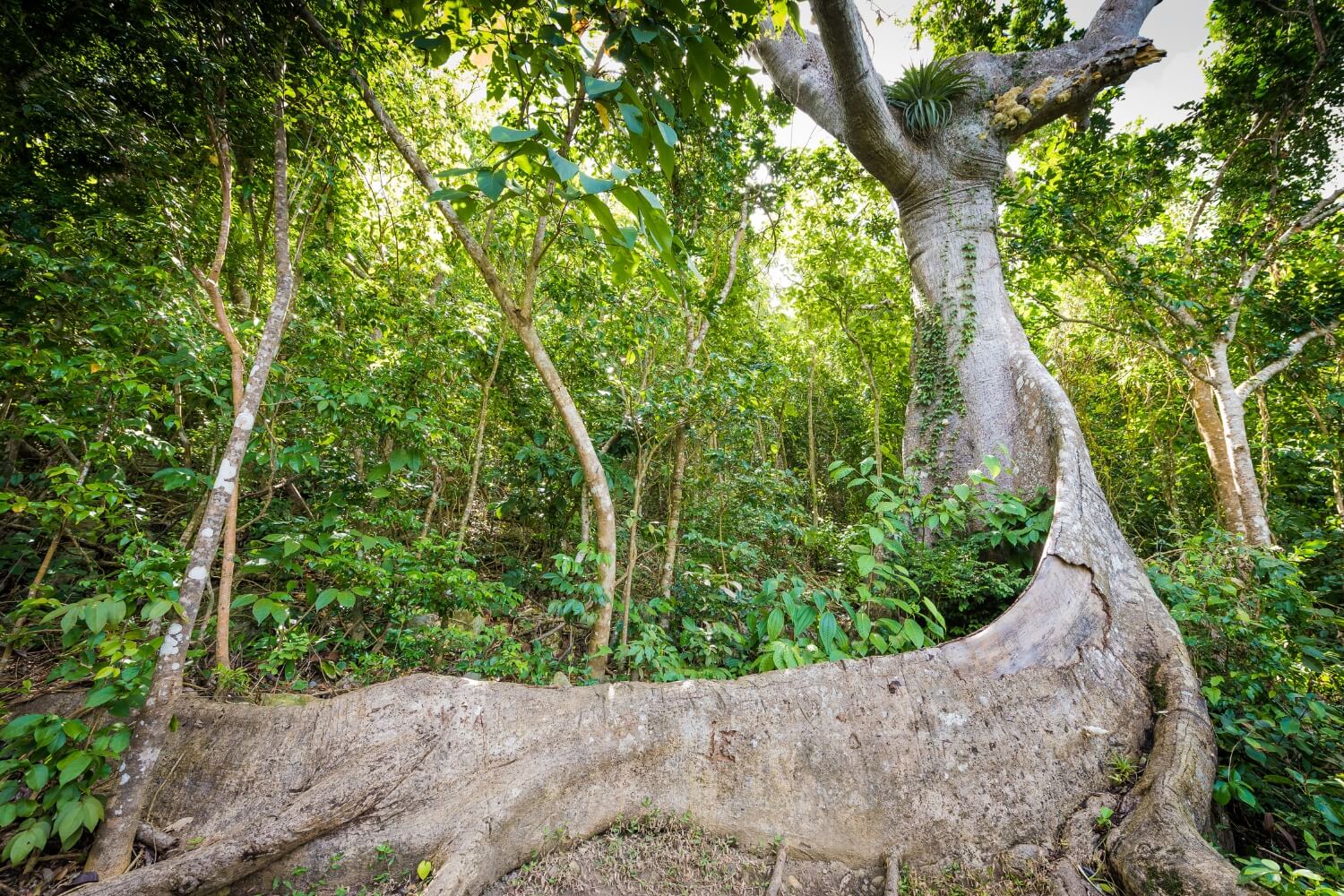
1.- Epiphytic orchids: They are plants that establish themselves on the branches and trunks of trees. Their roots do not penetrate the bark of the tree, so they do not harm it like a parasitic plant would, since they only grow on the trunk or branch of the tree that supports them. Orchids obtain their nutrients from the air, rainwater, and tree bark debris. Atwood (1986) points out that 73% of orchids are epiphytes.
2.- Terrestrial orchids: These orchids grow at ground level, where they take part of the nutrients they need, which they also obtain from water and air. Its habitats are meadows, undergrowth and grasslands and even shrublands.
3.- Lithophytic orchids: These orchids grow on rocks that provide support for their development. They represent an intermediate state between a terrestrial plant and an epiphyte. Lithophytic orchids feed on stone mosses and nutrients dissolved in rainwater, as well as rock debris and even their own dead tissues.
5.- Saprophytes: Orchids that feed on organic remains and detritus.
4.- Semi-aquatic: Refers to orchids that live in flooded environments.
This is understood as the way in which the plant grows. Orchids have two types of growth:
Monopodial
Sympodial

Roots
Generally, the roots in orchids are elongated structures, covered by a spongy, whitish tissue called velamen (in epiphytic orchids). The sail fulfills the function of capturing water and nutrients. Root characteristics vary depending on the type of growth (epiphytes with velamen, lithophytes and terrestrials without velamen).
Pseudobulbs
The pseudobulb is a modified stem. It can be elongated and made up of several internodes. Other stems do not have internodes (space between nodes); They are with or without ribs and are smooth or wrinkled. They are usually partially covered in the adult stage by bracts (modified leaves). Some examples of pseudobulb orchids are: Oncidium, Odonthoglossum, Cattleya, Catasetum and Cycnoches.
Leaves
Most orchids have leaves with parallel venation and some with reticulate venation. The edges are always whole. The following types can generally be observed:
1.- Conduplicate leaves They generally have all the veins of the same size or with a main central vein. Usually, these leaves are thick or leathery (leather-like consistency).
2.- Cylindrical or terete leaves They are elongated and cylindrical leaves. They look like onion leaves.
The flower
It is one of the most showy structures of orchids and its ornamental value lies therein. This value is often supported by its varied shapes, colors, sizes and fragrances.
Flower structures All orchid flowers are characterized by having four very noticeable structures:
1) sepals
2) petals
3) column
4) anther and stigmatic cavity. They can be uniflorous (a single flower) or multifloral (many flowers), but, in general, they all have the same structures with morphological and color variants.
The fruit
The fruits in orchids are capsules. The seeds are contained in the capsules, which are very small and can contain thousands per capsule. Its size can be less than a grain of sand. The number of seeds varies depending on the species and can be hundreds or thousands.

Epiphytic species. Pseudobulbs, approximately cylindrical to fusiform, up to 35 cm long, unifoliate at the apex. It has oblong or elliptical-oblong, obtuse, leathery leaves. Inflorescence in terminal raceme, the peduncle begins more or less hidden by a noticeable conduplicate spathe up to 12 cm long. Flowers in number from 3 to 8, very large and showy, up to 17 cm in length, the sepals and petals creamy white and the lip colored with yellow and red.
Distribution: Peru, in the department of San Martín between 800 – 1,200 meters above sea level
Habitat: Tropical humid forest, on adult trees
Flowering time: December to March

Generalities: It is a large and showy epiphytic species. It has pseudobulbs. ovoid to conical-cylindrical, more or less tight, 7-15 cm high, bifoliate, covered towards the base with 3- 4 pairs of leaf bracts. Leaves very variable in size, 25-50 cm in length. Inflorescence 0.5-3 m, widely branched panicle. Flowers 7-10 cm long, thick texture. Considered the largest within the genre.
Distribution: Colombia, Ecuador and Peru. In Peru they are found in the Amazon, between 1,900 – 2,300 meters above sea level.
Habitat: Humid montane forest
Flowering time: November to May

It is an epiphytic orchid. Oblong-ovoid to pyriform pseudobulbs, 6-10 cm long, bifoliate, flanked by two leafy sheaths, the inner ones ending in leaves. Leaves narrowly oblong to oblong-elliptic, 45 cm long, petiole ribbed. Inflorescence in terminal raceme. Flowers 4-5 cm long, with cinnamon-brown sepals and petals, the lip with dark lilac lines, the set of flowers is quite striking.
Distribution: In Peru it is found in the departments of Huánuco and Junín between 900-2,000 meters above sea level.
Habitat: Humid montane forest
Flowering time: February to April
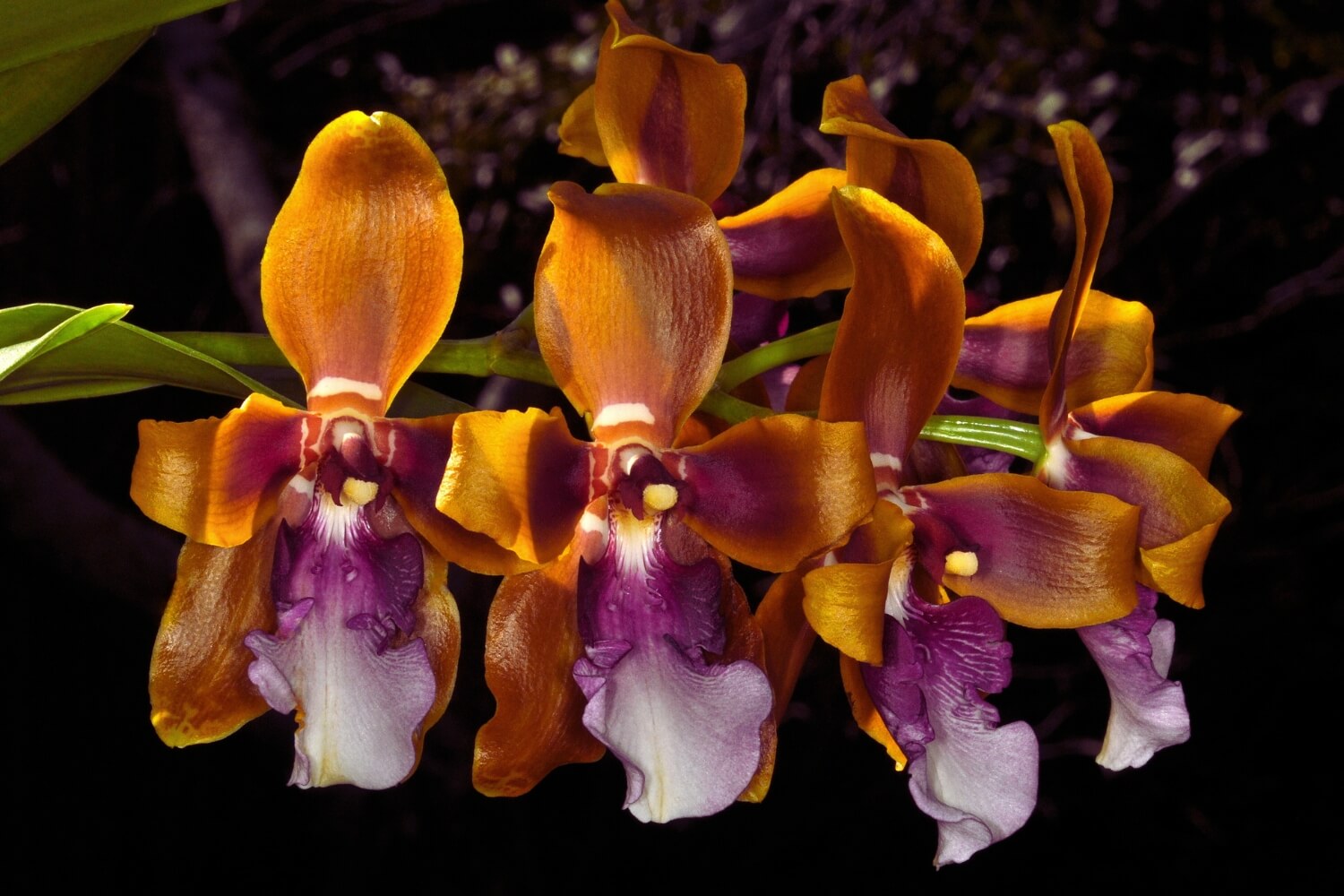
Epiphytic plant, It has a creeping, more or less elongated rhizome. Pseudobulbs cylindrical and unifoliate. Leaves sessile or short petiolate, blade narrowly elliptical, leathery, 5 to 30 cm long. Solitary inflorescence emerging from the base of the pseudobulb. Single flower, 4 cm long, commonly yellow to orange with red, lip with purple dots. They emit a very intense smell similar to chocolate.
Distribution: Brazil, Colombia, Ecuador, Peru and Venezuela. In Peru it is found in the departments of Cajamarca, Junín, Loreto and San Martín between 600-1,900 meters above sea level.
Habitat: Very diverse, but always in humid areas
Flowering time: June to August

This species of orchid is an epiphytic, small, tussock plant; thin roots. Thin secondary stems, 2-3 cm long including the petiole, the base is cuneate towards the inside of the petiole. Inflorescence solitary, slender peduncle, inclined to horizontal, 3-4 cm long. It has a showy flower, approximately 8 cm long, creamy white sepals, covered by a dense glandular pubescence, very fragrant. It is a species of Peruvian orchid most notable for its beauty and exquisite fragrance.
Distribution: Ecuador and Peru. In Peru it is located in the department of San Martín at 1,400 meters above sea level.
Habitat: Cloud forest, growing mainly in the treetops
Flowering time: August to November

Terrestrial plant. Pseudobulbs tight, bifoliate, narrowly oblong-elliptical, somewhat furrowed in very adult stages. Leaves oblong-lanceolate, acute, narrow at the base; petiolate. Solitary inflorescences arising from the base of the pseudobulb. Flowers approximately 7-8 cm long, greenish in color, the lip dark yellow. They emit a smell very similar to seaweed.
Distribution: In Peru it is found in Amazonas, Cajamarca, Huánuco and Junín at 1,800 meters above sea level.
Habitat: Montane forest, with moderate seasonal rainfall
Flowering time: January to April and September to November
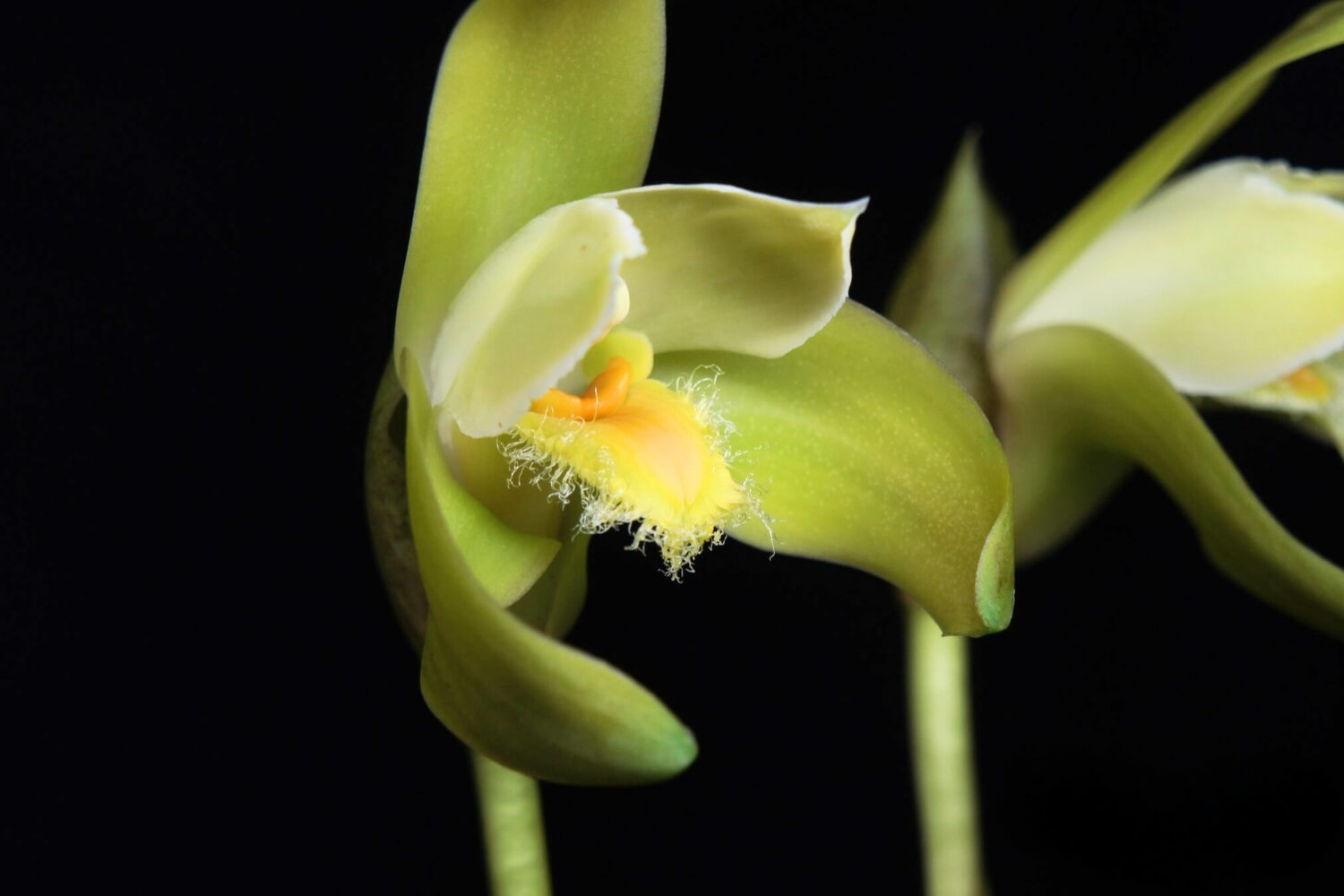
It is a species of orchid of large size, which prefers a cool climate, has terrestrial habits, sometimes lithophytic or epiphytic on rare occasions, the species with erect and linear oblanceolate, conical leaves, the base channeled petiolate, acute and thick. This species has orange flowers covered in a pattern of small purple hairs that create a sort of iridescent pattern as the flower moves in the breeze. The plant lacks a pseudobulb, it has leathery leaves that emerge from a crawling rhizome. The structure of the flower differs from most orchids, because they present greater development in the sepals, generally ending in short or long tails, compared to the other segments of the flower, which are very reduced.
Distribution: Found at an altitude of 2000 to 4000 meters around Machu Picchu in Peru on steep rocky slopes covered with grasses and bushes.
Habitat: Montane forest, with moderate seasonal rainfall
Flowering time: April to September

Epiphytic plant up to 50 cm high. It has fusiform pseudobulbs, covered with articulated sheathing bracts. More developed upper leaves, oblong-lanceolate, acuminate, up to 25 cm long and 5 cm wide. Inflorescence in raceme, male or female. Flowers in number from 1 to 12, up to 7 cm in length (male) which give off an exquisite perfume.
Distribution: Brazil and Peru. In Peru it is found in the department of Pasco between 300-1,200 meters above sea level.
Habitat: Cloud forest, they are frequently in environments exposed to very strong light, with great proliferation on trunks and branches
Flowering time: October to February

It is one of the most beautiful Peruvian orchids. Epiphytic orchid of variable size. It has a very well developed, long rhizome. It has oblong-elliptic pseudobulbs, narrow to fusiform, flattened, furrowed, unifoliate, with a spathe. Leaves 10-20 cm long, elliptical-oblong. Terminal raceme inflorescence. Flowers about 6 cm long or more, greenish-yellow sepals and petals, the lip yellow-orange with broad carmine-red lines.
Distribution: Bolivia, Brazil, Ecuador and Peru. In Peru it is found in Junín, Loreto and San Martín. between 600-1,200 meters above sea level
Habitat: Tropical humid forest species, grows on adult trees
Flowering time: September to December

It is an epiphytic plant. It has pseudobulbs covered by an overlapping envelope that ends in oblong-ovoid leaves, 12 cm long. Leaves 6 to 8 in number, grouped, ovate-oblong, acute, gradually narrowing towards the bottom, up to 23 cm long and 5 cm wide, folded. Inflorescence in raceme, lateral, basal. Small flowers, 6 to 12 in number, up to 5 cm in length, with petals and sepals deployed; chocolate color to dark brown purple and a caramel hue; lip with a greenish tone.
Distribution: Ecuador and Peru. In Peru it is found in the departments of Huánuco and Junín between 1,200-1,500 meters above sea level (masl).
Habitat: Very humid tropical montane forest, on coffee trees and other shrubs.
Flowering time: July to August
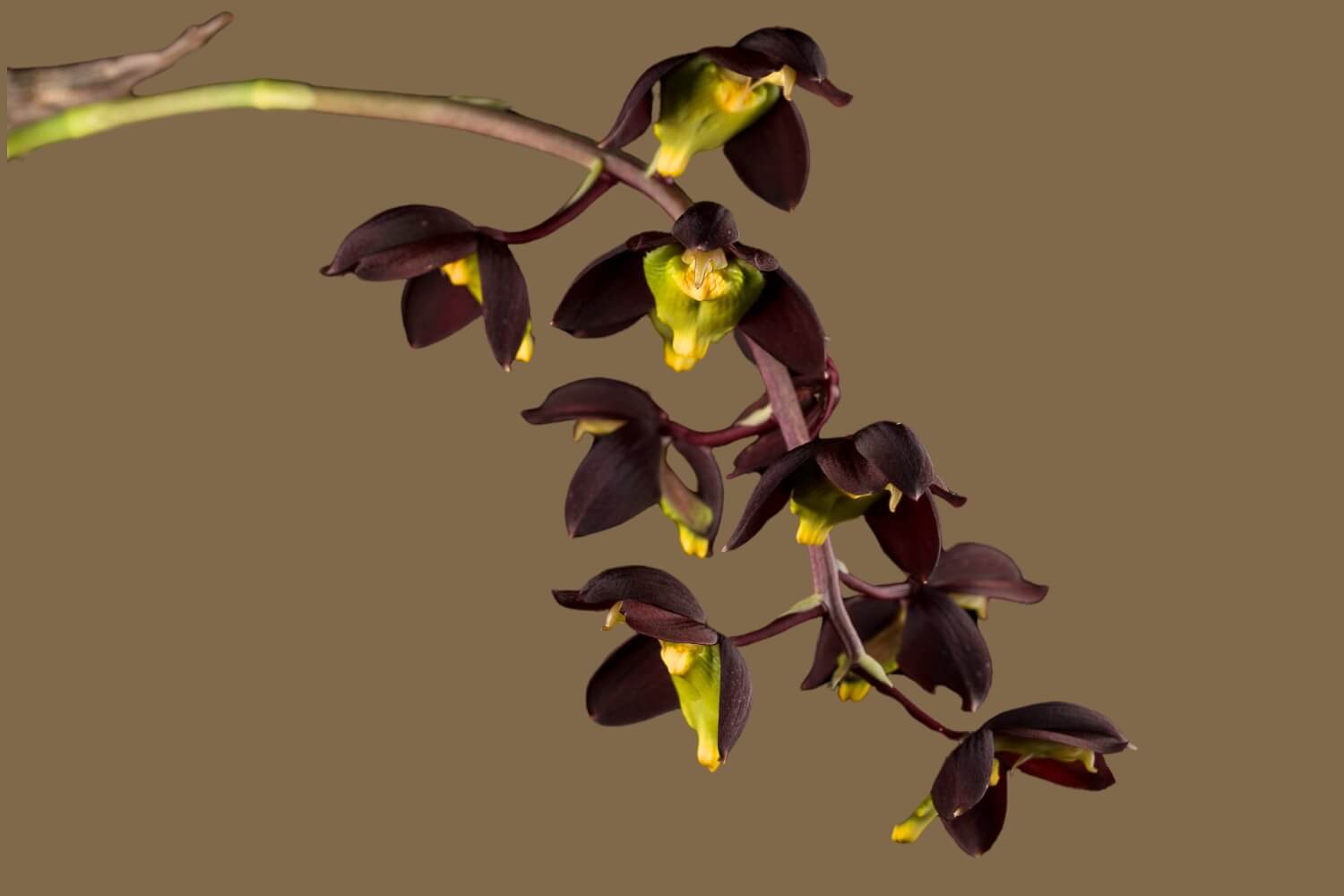
Epiphytic and tussock grass that can measure up to 6 cm and has a delicate appearance. The ramicaules are upright and short. The leaves are elliptical with an acute apex. The inflorescence has a short peduncle that arises from the base of the leaf and exceeds the size of the leaves. The flowers are distributed simultaneously along the rachis and each one measures 5 mm. Its flower has dark maroon sepals, petals and column; The lip is purple.
Distribution: In the Junin department
Habitat: Very humid tropical montane forest, on coffee trees and other shrubs.
Blooming season: month of August

It is an epiphytic herb that can measure up to 28 cm in length. Robust looking. It has two bifoliar pseudobulbs, mature, elliptical oval, furrowed from 4 to 7 cm. The leaves are oblong-lanceolate and leathery. The inflorescence is racemose and erect. It has a peduncle that arises at the base of the brown pseudobulb with six flowers. The flowers have yellow petals and sepals with dark red spots on the basal middle portion of each structure; The lip is rough and greenish-yellow in color with some brown spots distributed throughout the lip. The callus is orange on the crest and white on the basal portion. The column is green.
Distribution: In the regions of Huánuco, Junín, Loreto, San Martín, Amazonas and Cajamarca.
Habitat: Very humid tropical montane forest.
Blooming season: August to September
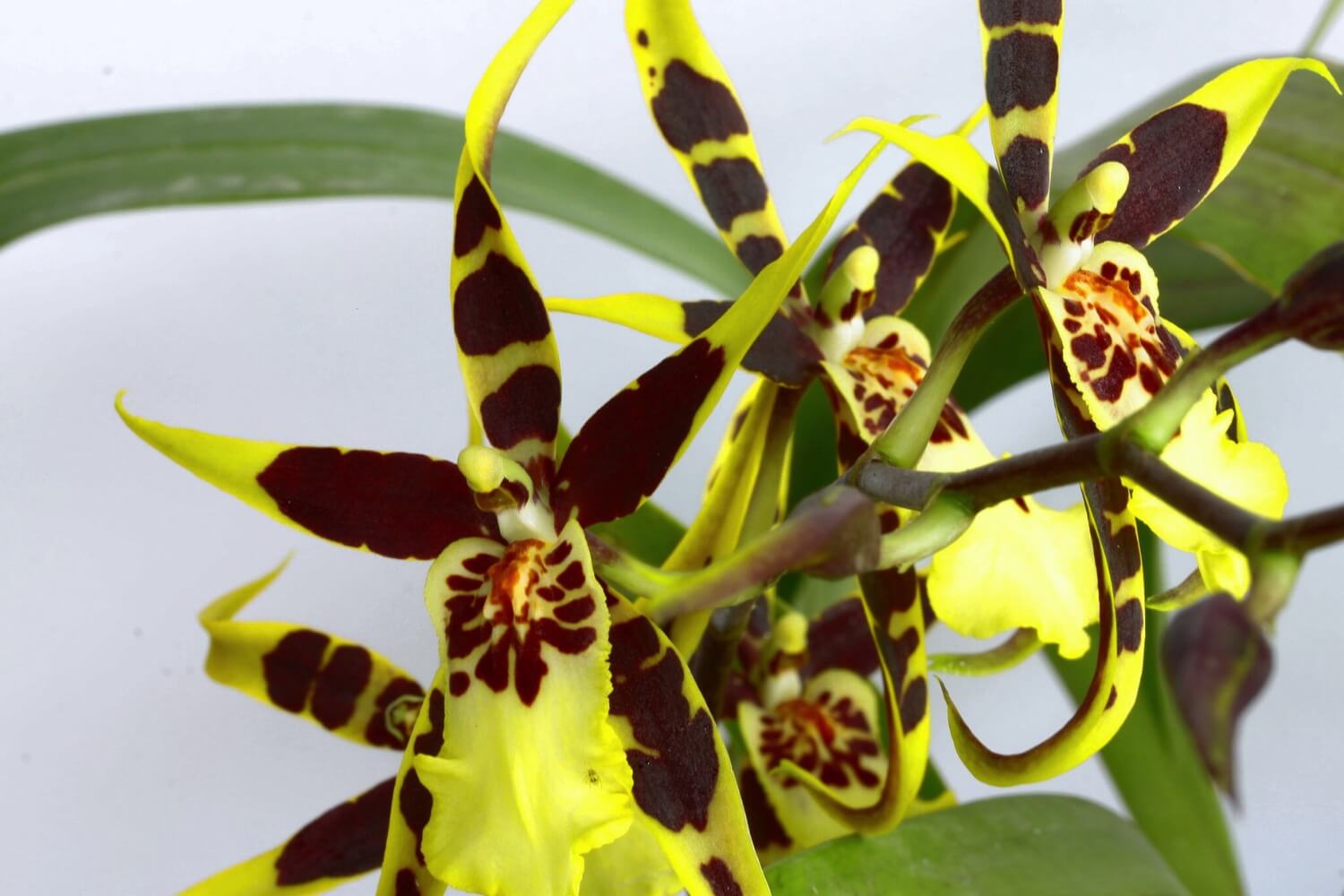
It is an epiphytic herb, with a robust appearance. It has imbricated leaves at the base and alternate that give it the shape of a fan. The flowers are axillary, have a short peduncle and measure 7 cm. The flower has sepals, petals and lip that are white in the basal portion and dark brown from the middle to the apical portion. The column is faint maroon on the inside and pale green on the outer distal portion. The lip in the basal portion has a crest with erect white fimbriae.
Distribution: In the regions of Junín and Pasco
Habitat: Very humid tropical montane forest.
Blooming season: April to May
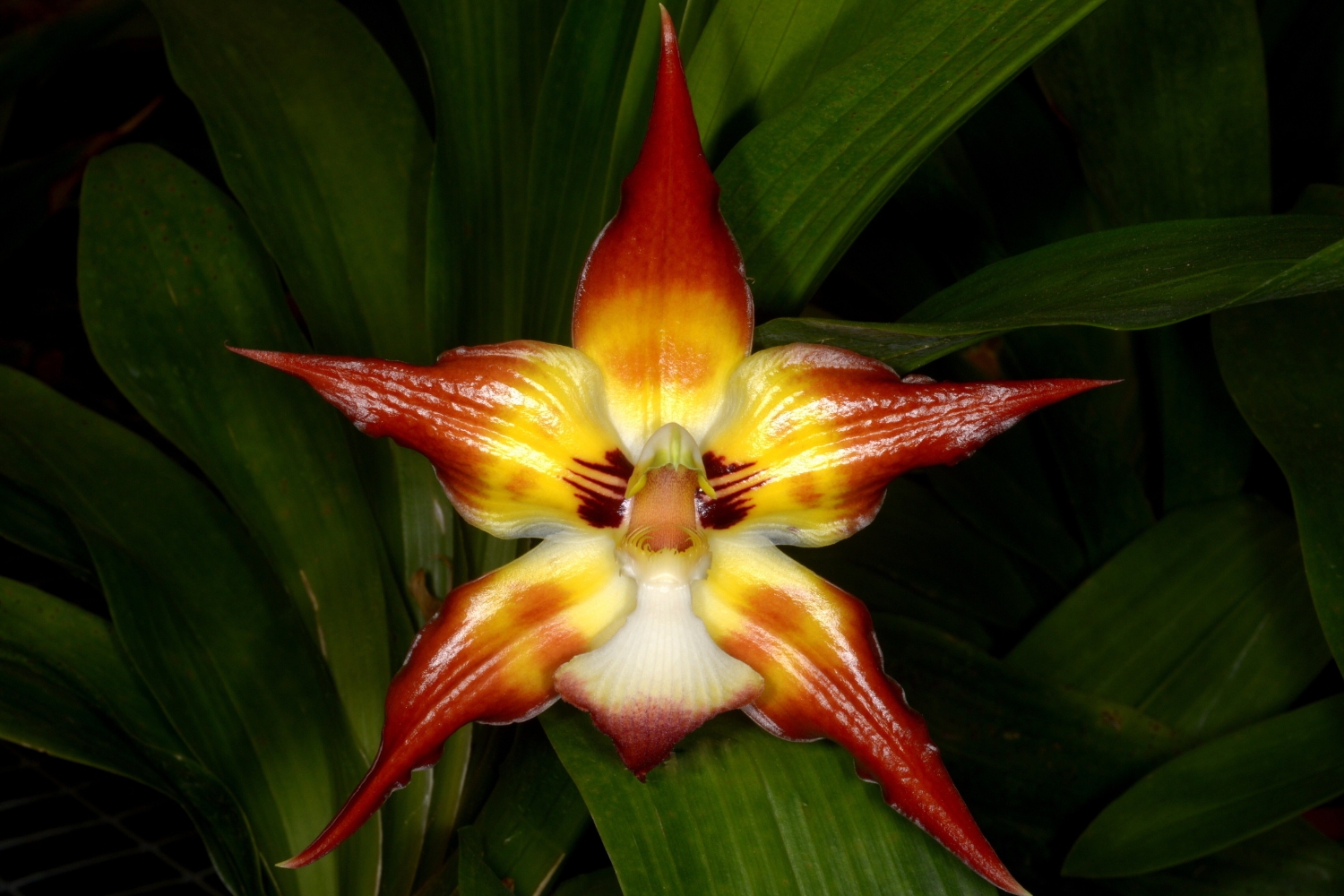
It is an epiphytic herb that can measure up to 5 cm and has a robust appearance. It has three unifoliate pseudobulbs of 0.5 cm. The leaves are flattened, oblique, rough, acuminate, purple in color. The inflorescence is sub-umbellate, it has a short peduncle of approximately 5 cm. The flower measures 1 cm, they have white sepals, white petals with lilac dots; the lip is pale lilac and the column is fuchsia.
Distribution: In the region of Junín
Habitat: Very humid tropical montane forest.
Blooming season: August to September

It is an epiphytic, tussock grass that can measure up to 27 cm and has a robust appearance. It has five ovoid-pyriform, furrowed pseudobulbs of 5 cm. The leaves are oblong and have a very long petiole. The flowers arise from the base of the pseudobulbs with a very short peduncle. The flowers have pale red sepals, the petals are maroon, the lip is maroon with a dark maroon, warty-looking callus in the middle, and the column is pale red.
Distribution: In the regions of Amazonas and Junín
Habitat: Very humid tropical montane forest.
Blooming season: May to July
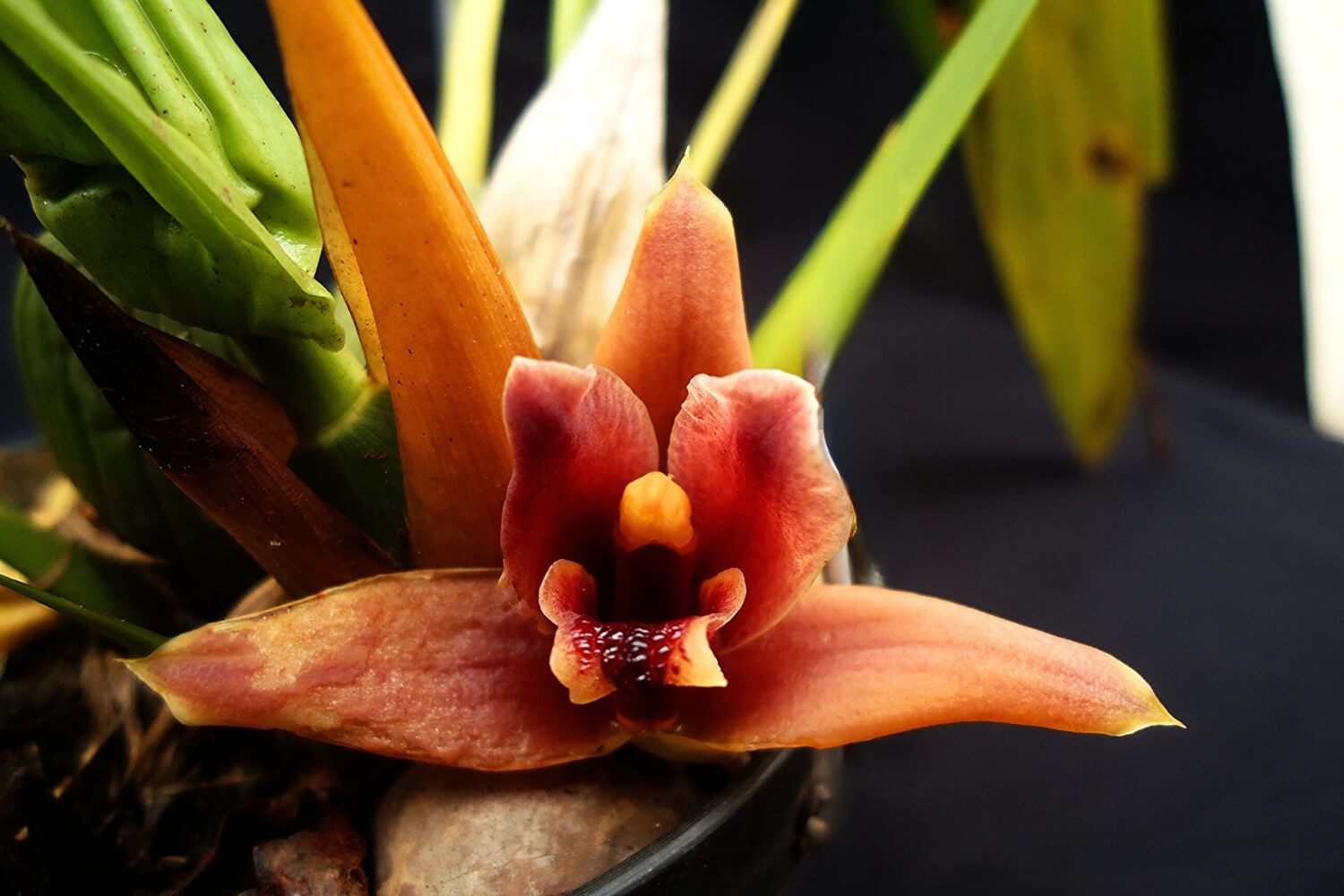
It is an epiphytic herb that can measure between 25 and 33 cm and has a robust appearance. The pseudobulbs have a single leaf, are ovoid, measure 4 to 5 cm and have grooves. The leaves are oblong-elliptical, 12 to 16 cm. The inflorescence is racemose, pendent and arises at the base of the pseudobulb. The flowers measure 4 to 5 cm, have white sepals, yellow petals, yellow lip and column.
Distribution: In the regions of Cusco and Junin
Habitat: Very humid tropical montane forest.
Blooming season: February to March
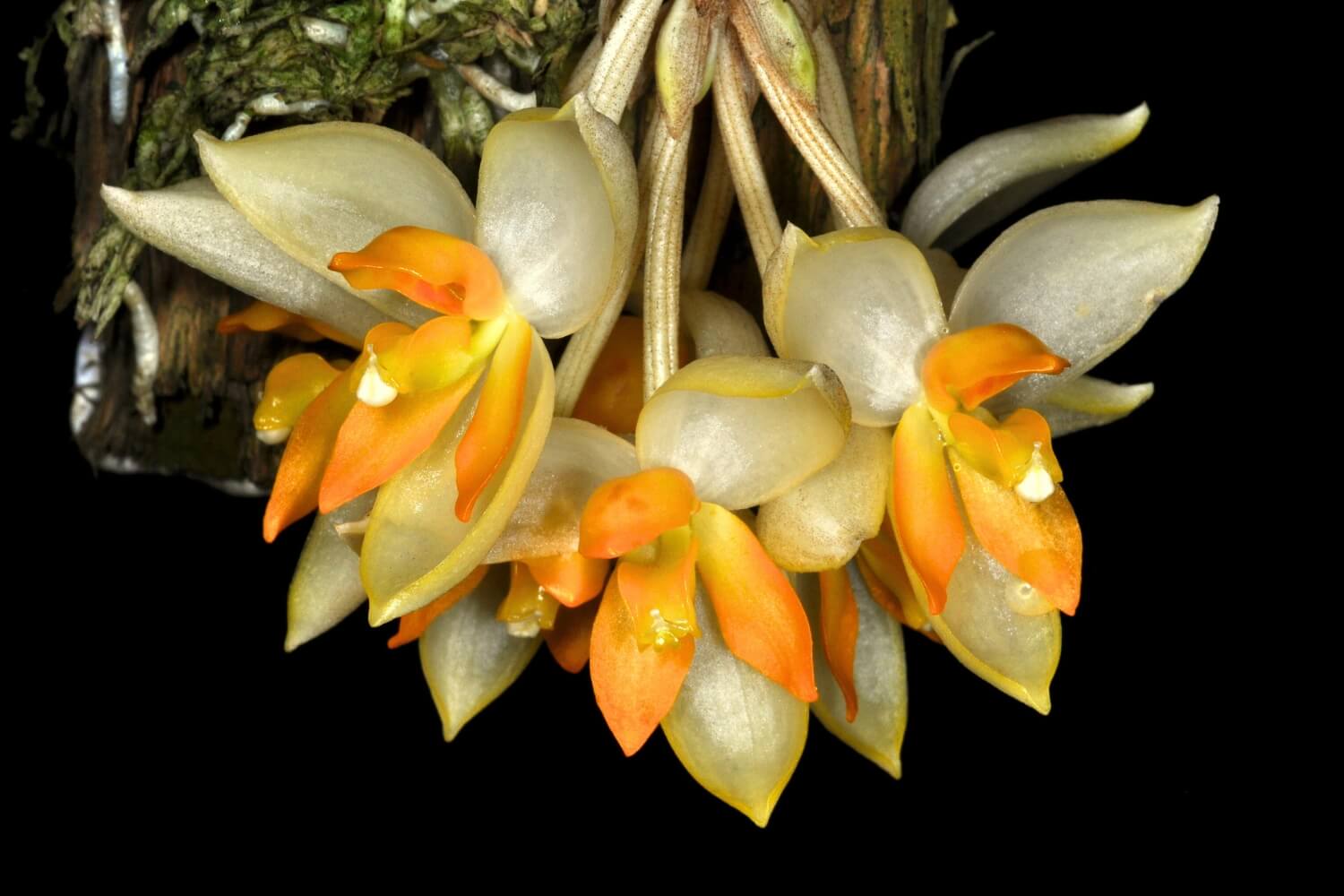
It is an epiphytic herb that can measure up to 30 cm and has a robust appearance. It has unifoliate pseudobulbs. The leaves are elliptical to oblong-elliptic. The inflorescence is short and pendulous with two to four flowers of 7 cm each. The flower has white sepals, petals, lip and column, with purple spots on the inside of the lip.
Distribution: In the regions of Amazonas, Huánuco and Loreto
Habitat: Very humid tropical montane forest.
Blooming season: October to November

It is an epiphytic, tussock grass that can measure up to 4 cm and has a delicate appearance. Its leaves have purple undersides. The inflorescence has a long, very thin, purple peduncle; At the apical end is the flower that measures 2 cm. The flower, on the outside, has yellow sepals at the base and dark maroon sepals from the middle to the distal portion; Inside, the dorsal sepal is yellow, the lateral sepals are yellow in the proximal part and dark maroon at the distal end. The petals are pale yellow with a maroon line in the middle. The lip is purple. The column is green.
Distribution: In the regions of Amazonas and Junin
Habitat: Very humid tropical montane forest.
Blooming season: April to September
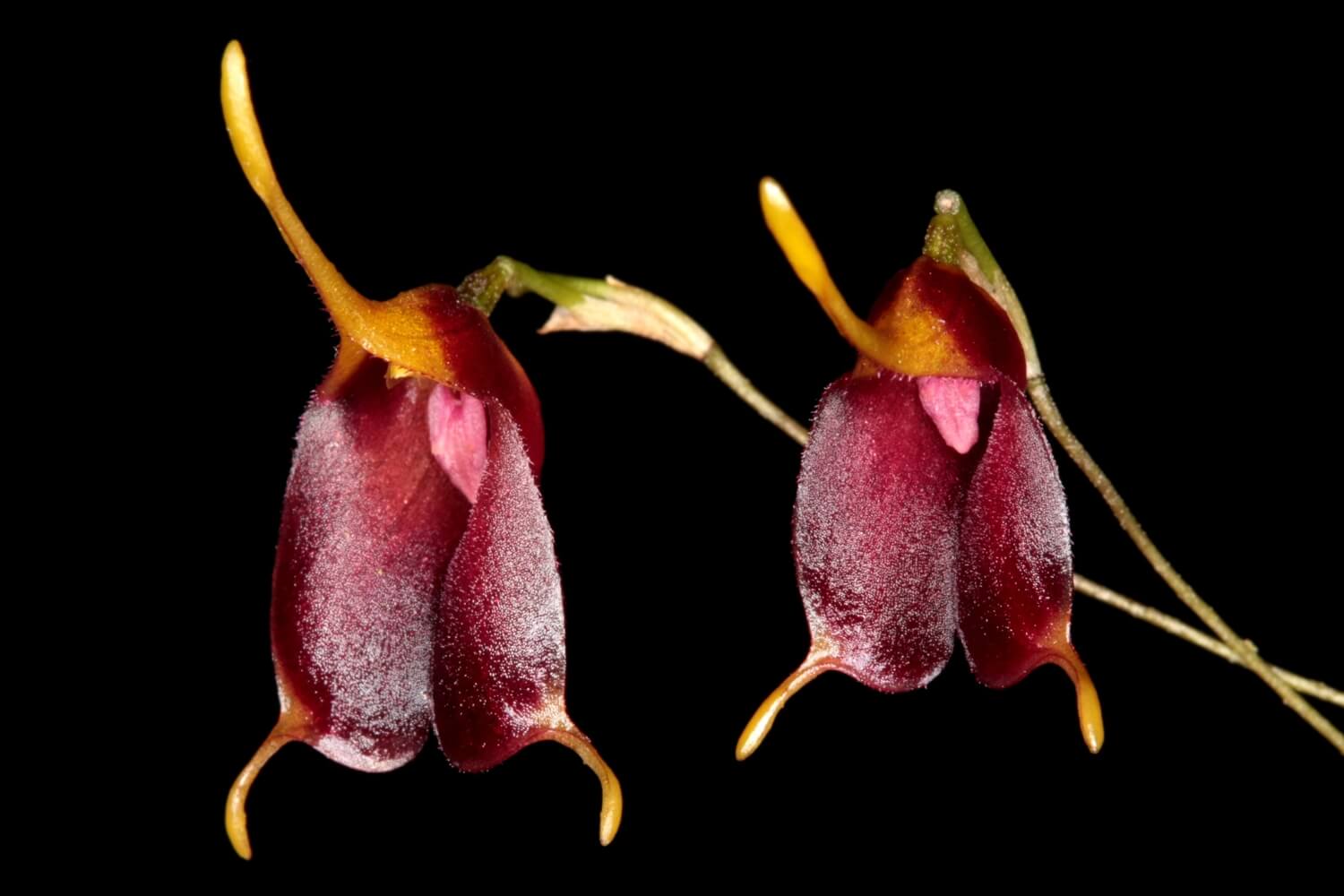
Orchid with a lithophytic or terrestrial habit. It has leathery, dark green leaves. Its upright inflorescence, often branched up to 70 cm high. The flowers are bright red with yellow markings at the base of the petals and lip. The flowers appear one by one and have a diameter of 4 to 6 cm. Species of the genus Phragmipedium display a single long plate-like staminode, whisker-like petals, and a trilocular ovary. The sac-shaped lip is curved inward at the margins. The leaves are pointed with a length of about 80cm. They do not have pseudobulbs and the stem reaches 80 cm in height, presenting the inflorescence of 2 to 3 flowers.
Distribution: In the regions of Cajamarca and San Martín
Habitat: This plant grows on partially shaded and moist river banks or moist granite rocks
Blooming season: September to December

It is an orchid with a terrestrial habit, epiphytic and lithophytic. They are robust, erect plants, with a short stem and 40 to 50 cm high, with basal, distichous leaves, 10 to 25 cm long and 2 to 4 cm wide, dorsally sulcate, leathery and glabrous. The inflorescence is 30 to 60 cm long with 2 to 4 showy, finely hairy flowers, of variable color but generally greenish-yellow spotted with brown or purple. The flower bracts are large, conduplicate and inflated. The sepals are pubescent on the outside, with wavy edges, the lateral ones united almost to the apex forming a lanceolate and acuminate blade at the apex, 8 to 13 cm long. The dorsal sepal measures just over 19 cm and is cream-colored with brown or green veins and tends to fall over the lip. The petals are narrower than the sepals and extended into extremely long and pendulous tails up to 60-70 cm long. The lip is calceeform, 4 to 5 cm long, inflated, open, with edges curved inwards, pubescent on the inside, generally greenish with red or brown spots; the column is short, with a fertile anther on each side and a scutiform sterile anther above.
Distribution: In the subtropical forests of South America
Habitat: Grows in open and regularly dry places. It is distributed from 1800 to 2000 masl.
Blooming season: June to July

One of the most beautiful flowers in the world is found in Peru. This is the Phragmipedium Kovachii, better known as “Pink Slipper”, which, in addition to being the most beautiful orchid in the country, is also an endangered species. The latter is because it was trafficked by an American flower grower, who even patented it under his name as if it were his discovery.
It is a terrestrial plant with sympodial growth, it has rhizomes in which several buds are located from which groups of leaves sprout and after a certain time of their growth; The floral bud or spathe sprouts from the central part. The leaves are folded. The inflorescence is 23 to 25 cm in diameter of salmon, raspberry, purple colors. The flowers open consecutively with a 7 to 9 cm long bract (scape). The sepals are somewhat concave, gold and brown in color.
Distribution: The orchid only grows at an altitude between 1,600 and 1,900 m.a.s.l. and can only be found in tropical cloud forests.
Habitat: In the regions of Amazonas and San Martín in Peru.
Blooming season: They can bloom at any time, but usually the flowering season occurs during the last months of winter and early spring. Some sequential flowering species may remain in flower for six months or more on the same inflorescence, the flower dropping and the next bud ready to open.

It is an epiphytic plant with cylindrical pseudobulbs, with 2-3 nodes or separations about 25 cm long. Its inflorescence has 5 to 13 flowers and these are large, measuring 15 cm in length. The labellum is long and tubular, with a wavy edge, and is yellow with deep purple or orange veins on the inside. The other tepals are light purple, with curled edges.
Distribution: Cattleya maxima is found in the dry and tropical forests of Ecuador and Peru.
Habitat: In the Andes mountains of Peru, Ecuador and Colombia.
Blooming season: April to July

It is an epiphytic orchid, with slightly compressed pseudobulbs, in which grooves form with age and carry a single leaf at the apical part. The leaves are narrowly oblong-elliptic or oblong, acute, leathery. Inflorescence terminal, upright, with 6-10 flowers arising from a pseudobulb. This orchid is characterized because the flowers have pale creamy yellow sepals and petals; and because the lip is white with lavender and yellow markings; and notoriously sharp.
Distribution: It is an endemic species of Peru. It has been registered in the Junín and San Martín regions.
Habitat: In the eastern Andes in humid montane forests, on branches of tall trees; at elevations of 400-1220 meters
Blooming season: July to September

It has pseudobulbs with mostly bifoliate transverse internodes. The leaves are elliptical, 20 to 30 cm long, leathery, with very noticeable thick parallel veins. This orchid is characterized by having a cluster inflorescence, it has male and female flowers, the flowers are greenish yellow with brown spots on the margins with numerous hairs, all with a strong fragrance. The lip is sacciform.
Distribution: In the regions of San Martin and Loreto
Habitat: Grows in places with a lot of shade and leaf litter.
Blooming season: March to June
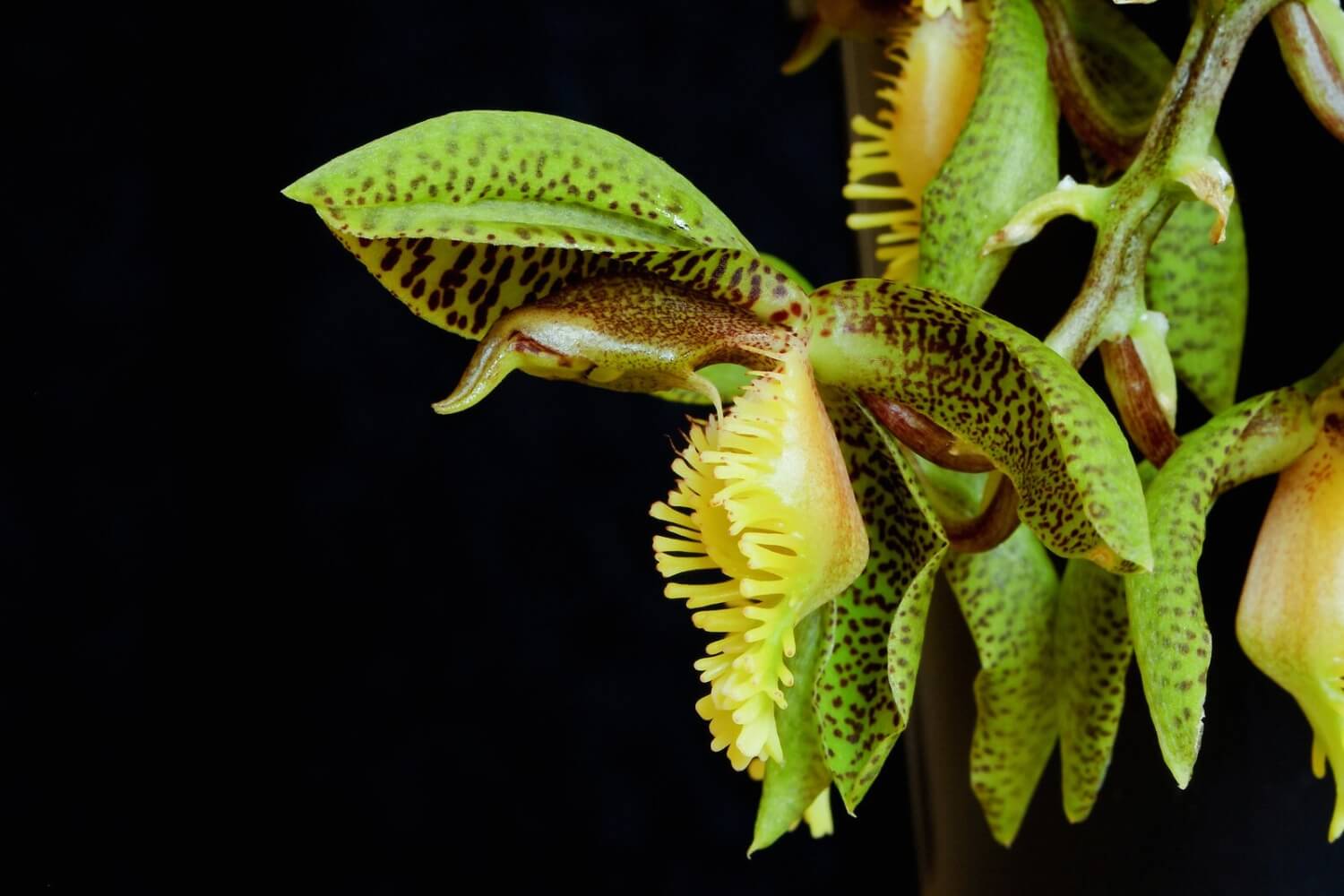
It is an epiphytic orchid, with fusiform pseudobulbs carrying 4 to 6, plicate, elliptic, acuminate, gradually narrowing below into the petiolate base leaves, 15 to 20 flowered inflorescence. This species has dark purple sepals; and the lip is green with markedly dactyliform margins (finger-shaped).
Distribution: In the Sam Martin region
Habitat: wet montane forests at elevations of 800 to 900 masl
Blooming season: May to July

It is a plant up to 40 cm high, epiphytic. It has fusiform pseudobulbs, covered by leaf bracts. It has elliptical-lanceolate leaves. Male flowers; sepals and petals are brown-brown, lip is brown with purple dots, lobes and center pale cinnamon with red-purple dots. The column is dark purple, the anther is lilac with pinkish-lilac spots. Female flowers have dark brown sepals, lighter brown petals with yellowish base, yellow lip, pale brown-brown margins. This orchid emanates a chocolate smell.
Distribution: It has been registered in the regions of Huánuco, Loreto and San Martín
Habitat: Lush montane forests, epiphytic in humid environments from 400 to 800 meters of altitude.
Blooming season: Twice a year
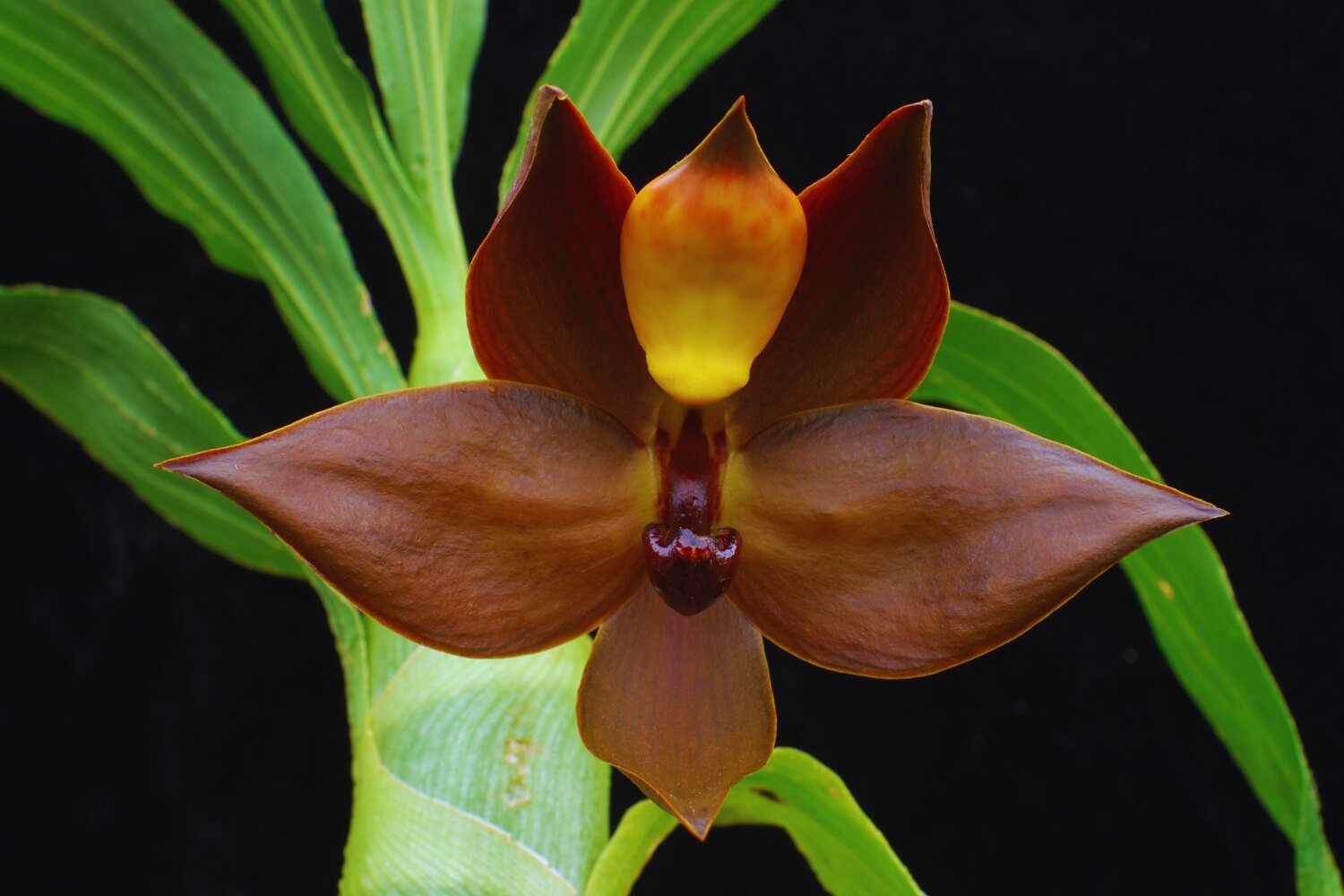
It is a terrestrial orchid of 60 to 80 cm. It has large corms partially covered by the soil or substrate where it grows. The inflorescence is an arcuate raceme, up to 2 meters long. Each flower measures 4 to 6 cm, pinkish to magenta in color. The lip has yellow ribs. It is a relatively abundant species.
Distribution: It is found in the regions of Cusco, San Martin, Amazonas and Junin, where it is found at altitudes of 200 to 2500 meters.
Habitat: It grows in open, sunny places, on sandy loam soils in humid mountain forests, as well as in swampy places.
Blooming season: Flowering occurs from June to July.
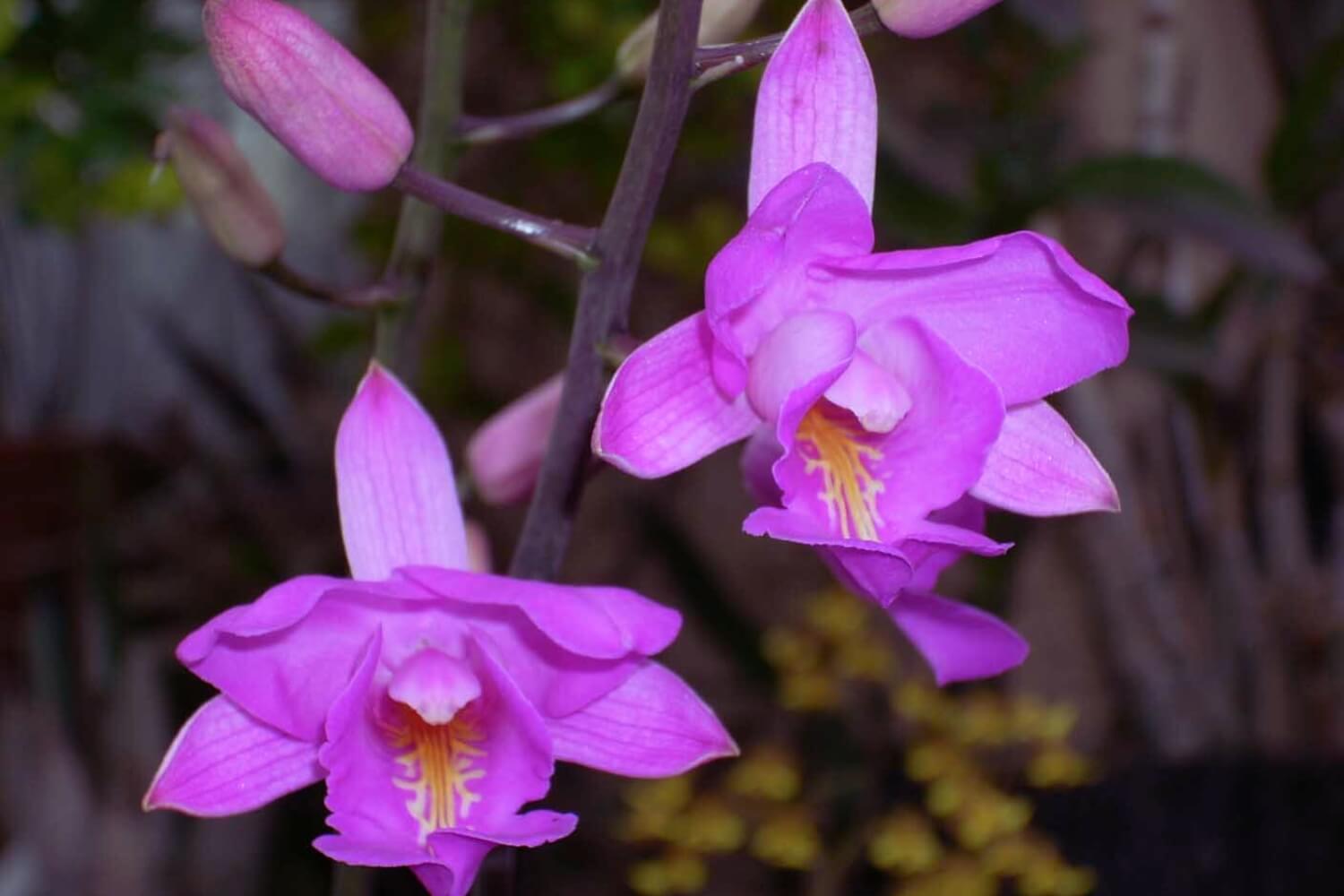
It is a terrestrial orchid, frequently greater than 80 cm long. The leaves are lanceolate, obtuse, approximately 19 cm long. The inflorescence is a raceme, with 4 to 20 flowers. Each flower is 3 to 4 cm long, petals and sepals are green with a network of dark green veins. The lip is three-lobed, covered with disc papillae. The spine is thin and arched.
Distribution: This orchid grows in the regions of Cusco, Apurimac, Huanuco, San Martin and Cajamarca.
Habitat: It grows in open places, among grasses and bushes, in soils with plenty of organic matter.
Blooming season: April to June

It is an epiphytic orchid, 10 to 15 long. With oblong spindle-shaped pseudobulbs, slightly compressed. The leaves are elliptical-lanceolate, 5 to 8 cm, leathery. The inflorescence in a raceme with 6 to 15 flowers. and basally enveloped by ovate to triangular pods in youth and bearing a single leaf, apically, narrowly lanceolate ribbon-shaped, leathery, apically oblique, gradually thinning towards the base. Each flower is 2 cm long, orange-red in color. The lip is larger than any other part of the perianth. It has a very noticeable spur.
Distribution: 600 to 700 masl are distributed in the regions of Cusco, Huanuco, San Martin, Amazonas.
Habitat: It grows in dry environments, on Inga and Citrus trees, the roots adhere directly to the branches, without the need for additional substrate
Blooming season: June to July
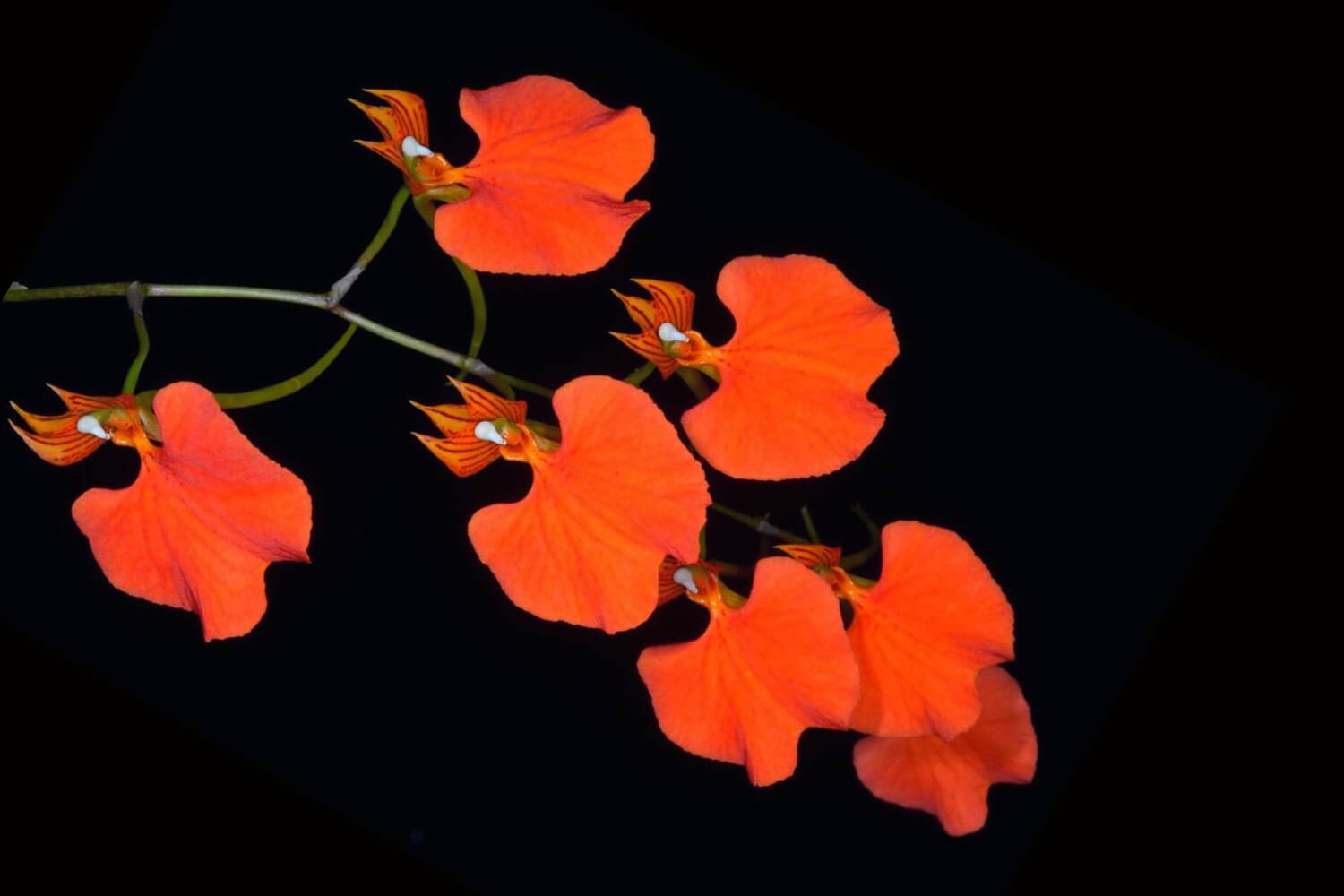
It is an epiphytic orchid 30 to 40 cm long. It has smooth, large and semi-ovoid pseudobulbs. The leaves are lanceolate, 60 cm long. It has an inflorescence of 2 to 2.5 cm. Each flower measures 3 to 3.5 cm long, yellow with red spots, sepals and wavy, apiculate petals. The lip is ovate triangular, yellow with red spots and white calluses on the basal part.
Distribution: It is distributed at an altitude of 2800 masl, in the regions of Cusco, Huanuco, San Martin.
Habitat: In the cloud forest, mostly in the crowns of giant trees such as Clusia and Alnus, in a substrate consisting of abundant moss and decomposing leaf litter.
Blooming season: April
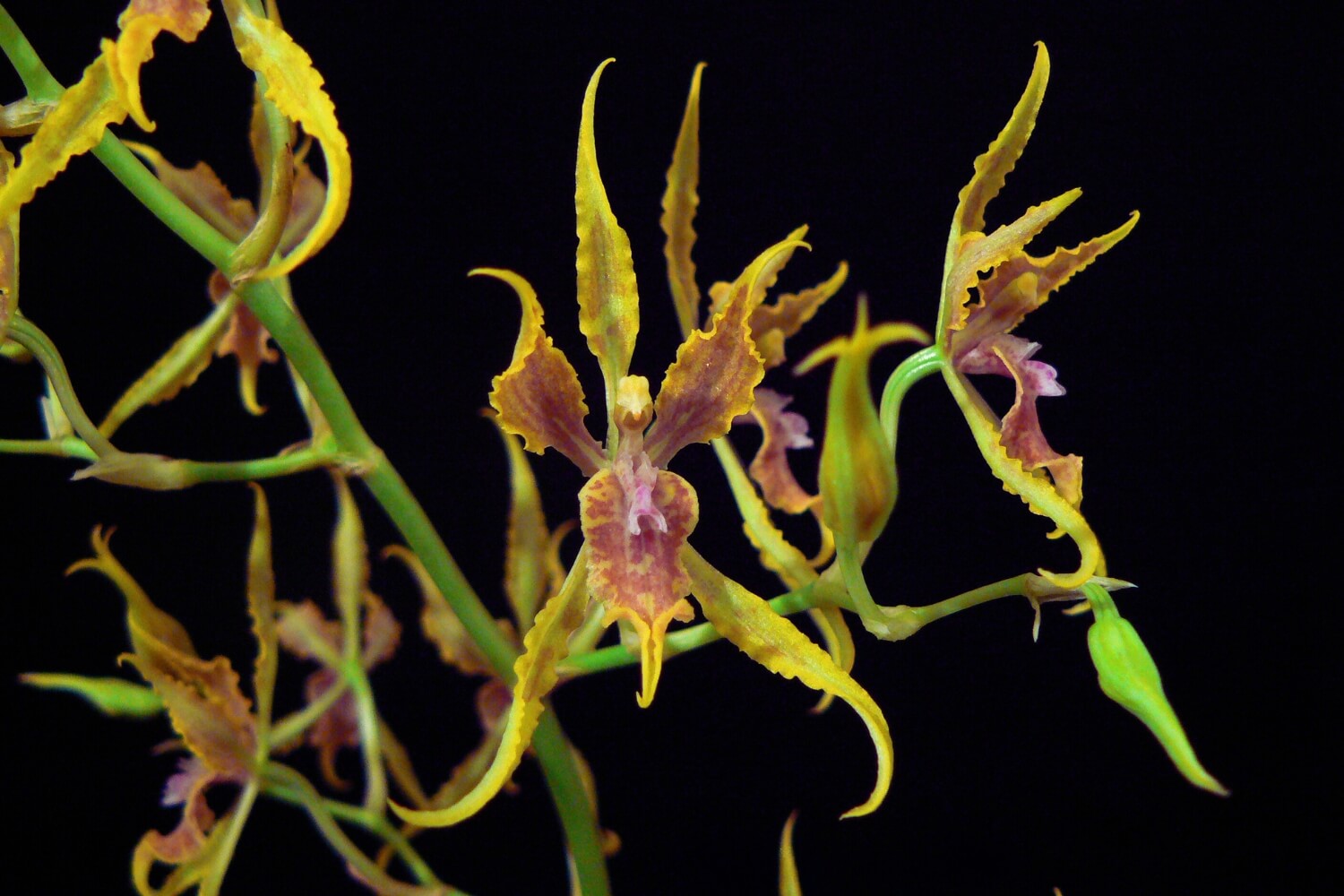
It is a terrestrial orchid, branched, thick primary stems 6 mm in diameter, branches reach up to 2 mm wide. Leaves folded, lanceolate or elliptical-lanceolate, acuminate. Inflorescence terminal, oblong; bracts ovate and acuminate; orange flowers; sepals and petals 7 to 9 by 2 to 5 mm; lip 7 to 10 by 6 to 9 mm, basally sacciform, then compressed and thick; subcircular and crenate lamina; subglobose calluses 2 mm long; column 5 to 6 mm long, with an abaxial protuberance in the basal half.
Distribution: It is distributed from 2,200 to 3,200 masl. In the regions of Cusco, San Martin, Amazonas, Cajamarca, Huanuco.
Habitat: Grows in semi-shaded places, on rocky soils and with abundant moss
Blooming season: February to March
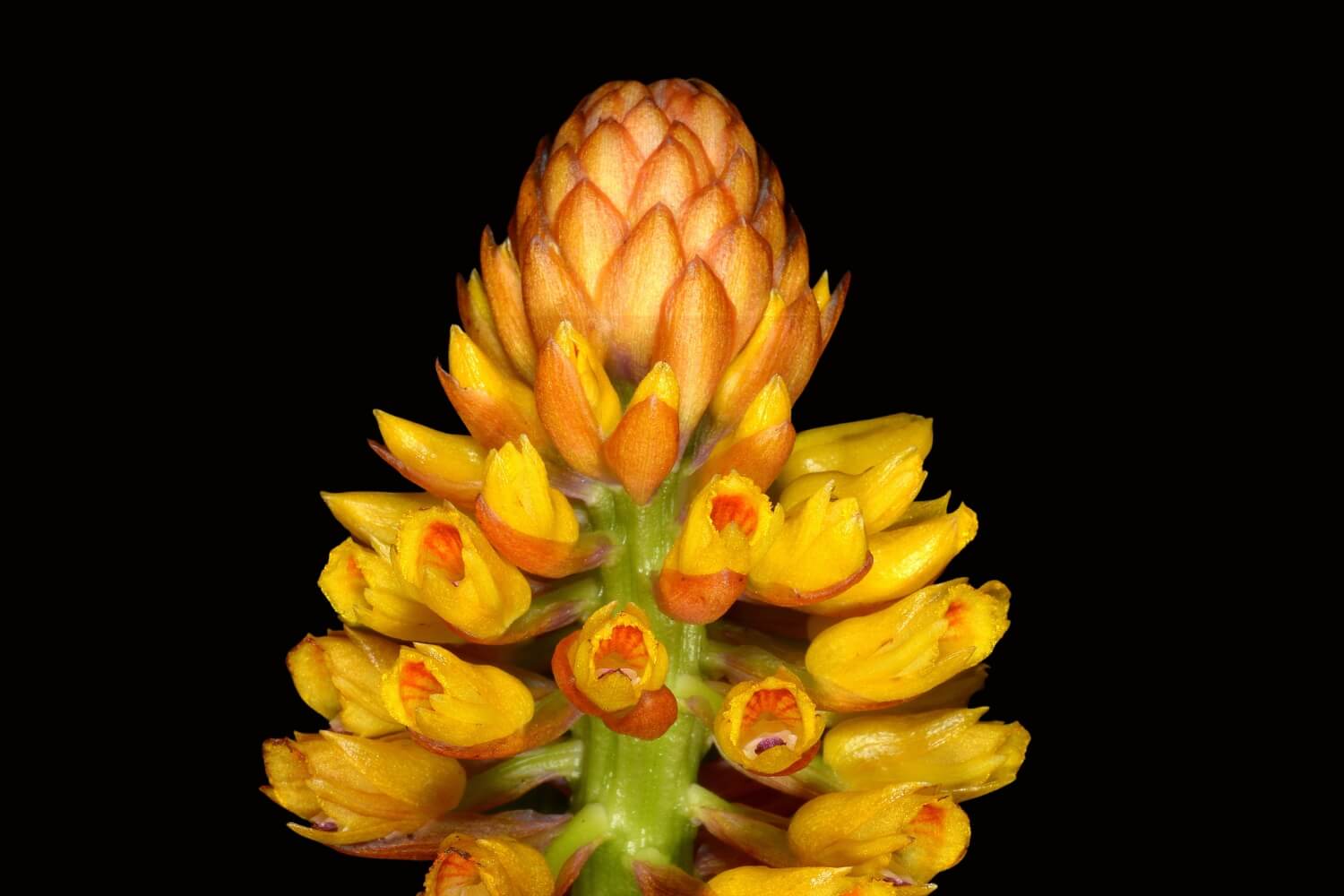
They are epiphytic or lithophytic plants. The stem measures 3 to 5 millimeters in diameter and is covered by leaf bracts. The leaves have an elliptical-lanceolate to sharply lanceolate shape, long acuminate and sharply veined, measuring 10 to 25 centimeters long and 2 to 7 centimeters wide. The inflorescence has 40 to 50 flowers; The bracts surround the inflorescence, the flowers are intensely violet-pink in color and it is covered by a mucilaginous (transparent) fluid, the lip with white calluses.
Distribution: Individuals of this species are distributed from 1000 meters above sea level to 2400 meters above sea level. In the regions of Cusco, San Martin, Amazonas, Huanuco.
Habitat: This species has an epiphytic habit (they live on the branches of trees), terrestrial (they live at ground level) and lithophytic (they live on thin layers of organic material on rocks)
Blooming season: February to July
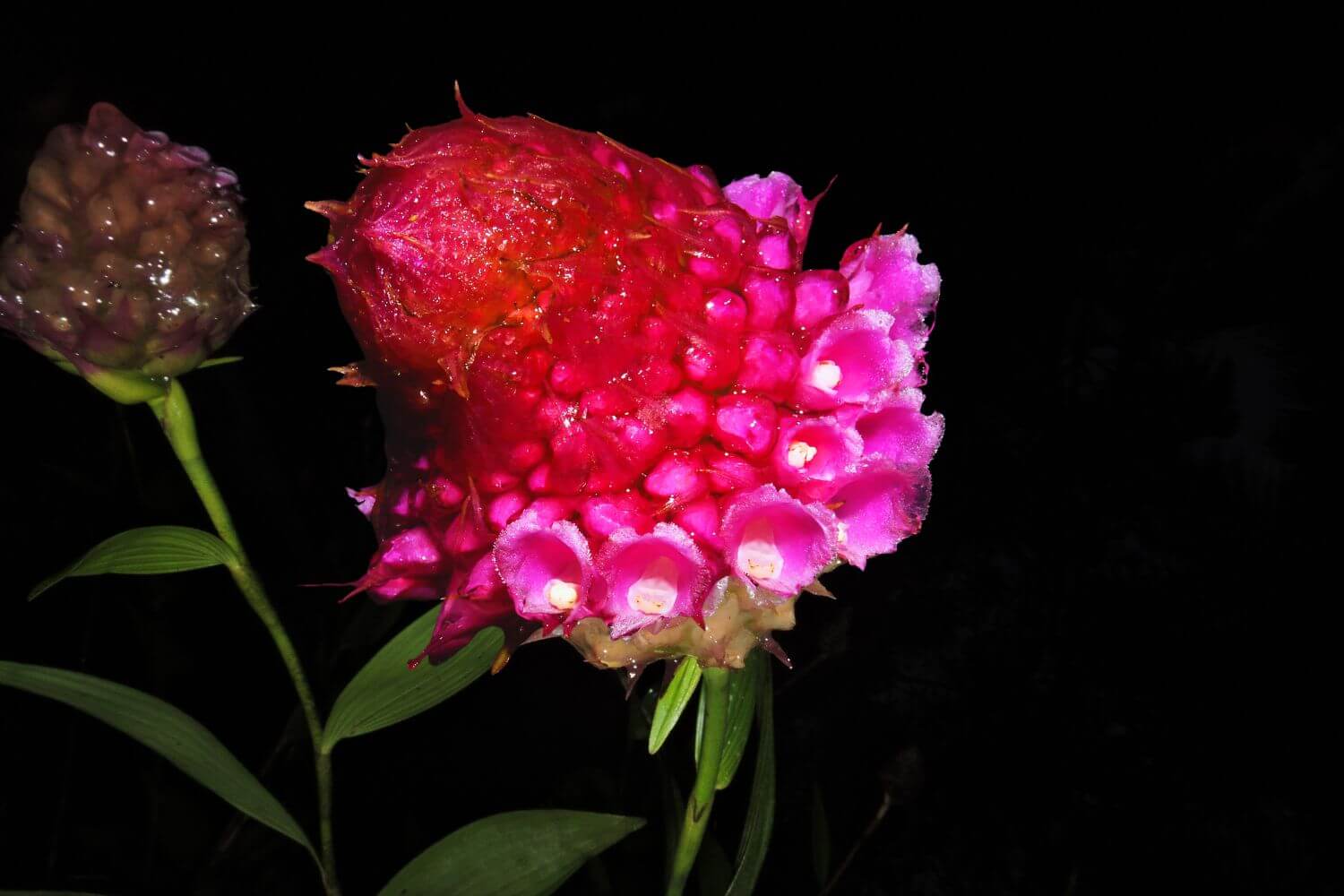
Medium to large sized, cold growing, epiphyte or lithophyte with long, straggly, frequently branching stems enveloped basally by tubular sheaths and carrying a few, erect, imbricating, lanceolate, acute, carinate, conduplicate below, dark green leaves suffused with purple and subtended by purple persistent sheaths, laxly pendant, densely many (10 to 14) flowered inflorescence with narrowly lanceolate. The species stands out due to the colorful flowers in a compact raceme, in bright tones of scarlet red, orange, or rarely yellow or reddish brown, the somewhat conduplicate, acute leaves, and the cupped sepals.
Distribution: They grow at an altitude of 2000 and 4150 meters high. In the regions of Cusco, Madre de Dios, Puno.
Habitat: It grows in poorly shaded, rocky places, in soils with abundant moss.
Blooming season: February to May
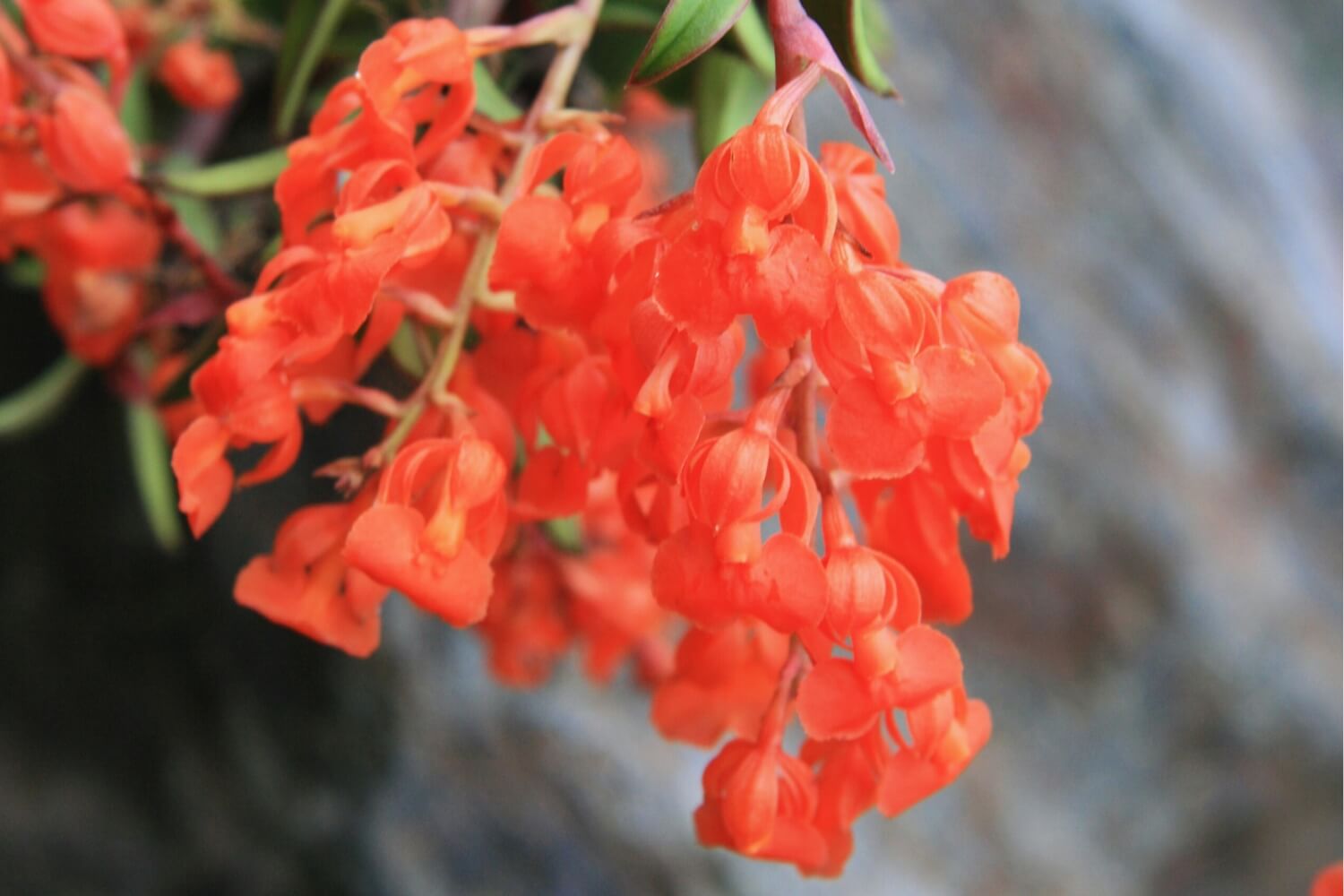
As a medium to large sized, hot to cool growing terrestrial species with erect, 80 cm canelike stems often with purple spotted sheaths, carrying alternate, 2 ranked, oblong, obtuse, fleshy-coriaceous, rigid, spreading horizontally leaves that blooms in the later fall through early winter on a terminal, peduncle to 25 cm long, many flowered umbelliform inflorescence carrying longlasting, successively opening flowers emerging from the tip of the mature cane.
Distribution: Found in Cusco, Madre de Dios, Puno; at elevations of 200 to 2000 meters
Habitat: Grows in open places with plenty of direct light. In dry soils with abundant surrounding vegetation and on Crescentia cujete trees.
Blooming season: July to September
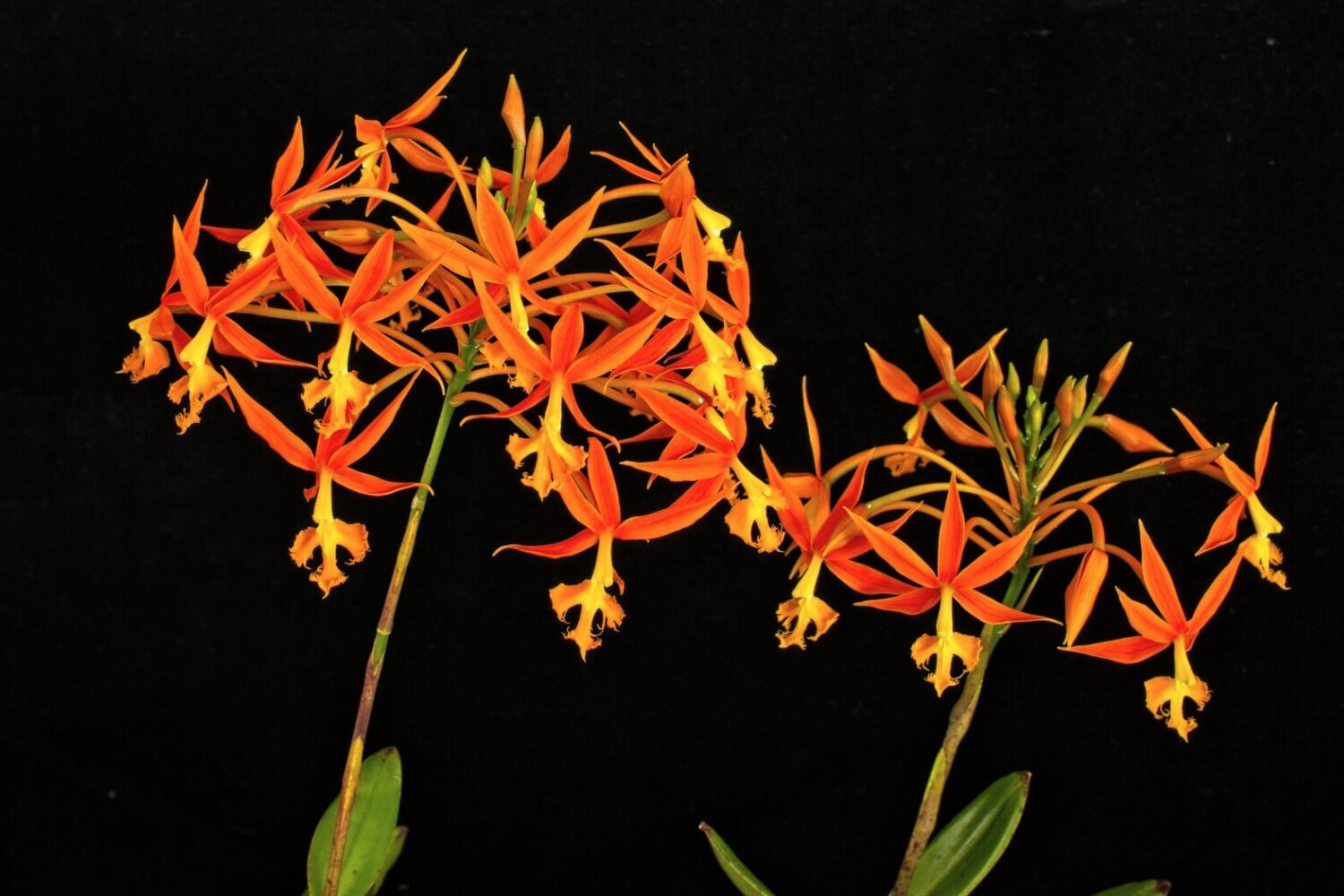
It is a terrestrial orchid of approx. 2 m long, without pseudobulbs. It is a sympadic plant that has thin stems covered from the base with imbricate pods that carry leaves above, a terminal inflorescence covered at its base with fine imbricate pods. The inflorescence in the form of a terminal raceme. The petals and sepals are very variable in color, they can be presented in lilac, red, orange, yellow or white tones, and have a notable callus on the trilobed lip with fringes, the edge of the lip has fimbriated lacerations, the flowers last from 2 to 3 weeks. The plant is quite cold and can tolerate a light frost.
Distribution: Found in Cusco, Madre de Dios, Puno, Huanuco, Amazonas; at elevations of 2000 to 3200 masl.
Habitat: Grows in somewhat shady and open places; in loose and moist soils.
Blooming season: February to June

Terrestrial species more than 3 m in length. The leaves are leathery. Each flower is about 8cm long, with mild fragrance; the petals dark pink. The lip with golden hues and a yellow callus along the lip. It is considered a rare species.
Distribution: Found in Cusco, Madre de Dios, Huanuco, Amazonas; at elevations of 1700 masl.
Habitat: It grows in wooded and open areas, in soil with a lot of organic matter.
Blooming season: February to May
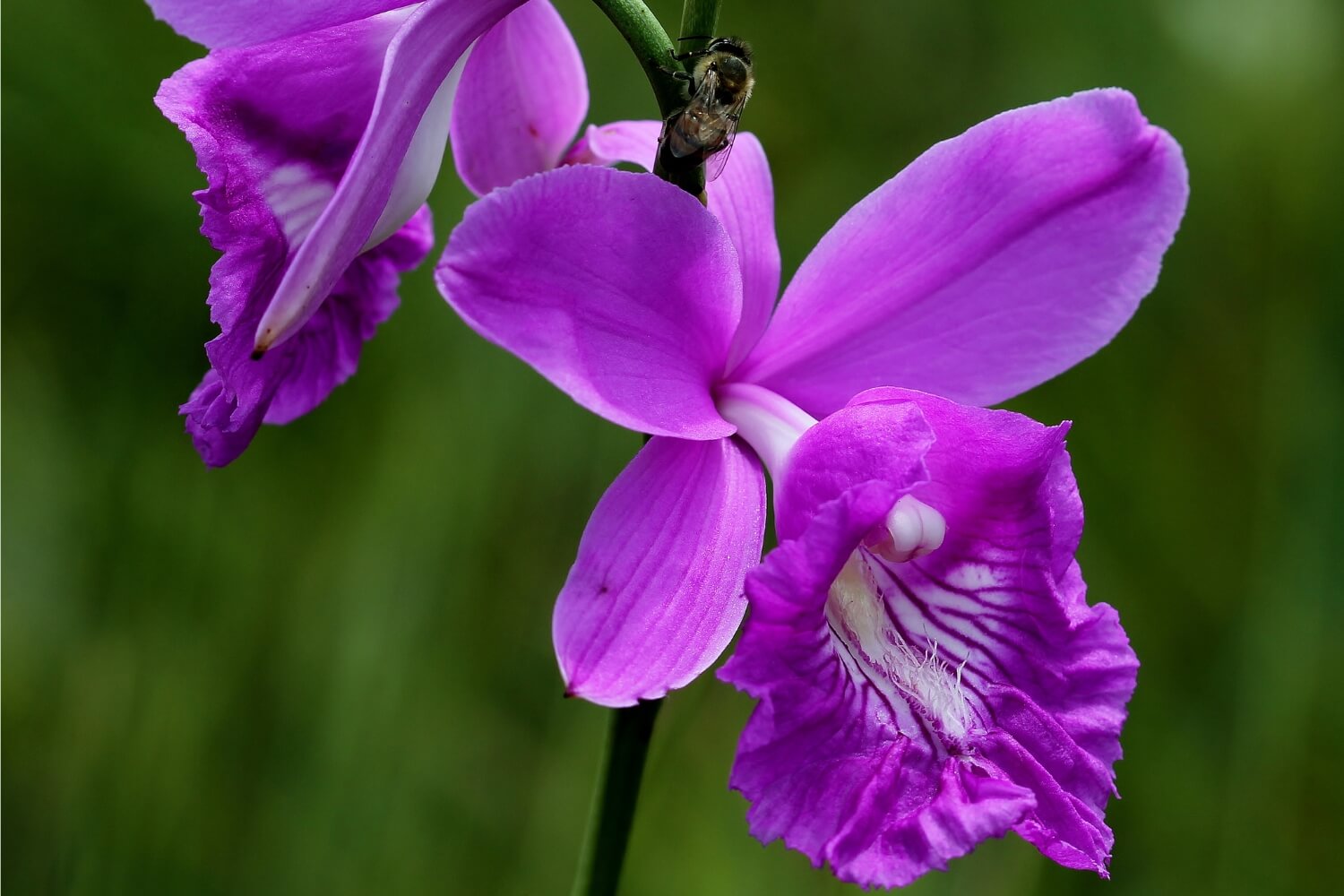
It is an epiphytic, fleshy, stemless orchid 5 to 8 cm long. Linear, distichic, imbricate leaves. The inflorescence is axillary and erect, giving rise to several successive flowerings. Each flower measures approx. 2.5cm long. Yellow in color, with a purple glow at its base.; The sepals and petals are greenish, linear, reflexed. The lip is a reddish acuminate triangle. It is a restricted habitat species.
Distribution: Found in Cusco, Huanuco, Amazonas; at heights between 2400 to 2800 masl
Habitat: This tiny epiphytic orchid occurs in cool, cold habitats, in mountainous areas of tropical rainforests.
Blooming season: May to June

It is a terrestrial orchid from 0.8 to 1.3 m long. It has grooved semielliptical pseudobulbs. The leaves are approximately 1 m long. The flower measures 15 to 20 cm long, they are fleshy, with green sepals and petals with a reddish lip. The column is cream colored and rigid. The flowering period can be up to 1 and a half months.
Distribution: Found in Cusco, Huanuco, Amazonas; at heights between 2000 to 2400 masl
Habitat: In the cloud forest, it grows in shady places. It is common to see it on road slopes.
Blooming season: April to June

It is a terrestrial and epiphytic orchid, 50 to 60 cm long. The flower is 4 to 5 cm long; Vinotinto red sepals and petals. With a whitish central part. The two lateral sepals fuse longitudinally forming an oval-shaped lamellar structure; the dorsal sepal is revolute, lanceolate.
Distribution: Found in Cusco, San Martin, Amazonas; at heights between 1300 to 2500 masl
Habitat: In the cloud forest, grows in open places with tall forest shade; in moist soil covered with abundant moss.
Blooming season: April to June

It is a terrestrial orchid, frequently greater than 4.5 m in length. The stem is reed type. The leaves are dark green ellipticalsacuminate. The inflorescence is in a terminal raceme. The flowers measure approx. 7cm; The sepals and petals are orange and fuchsia.
Distribution: Found in Cusco, San Martin, Amazonas; at heights between 1400 to 1700 masl
Habitat: In the cloud forest, it grows on sunny and shady slopes with high humidity.
Blooming season: May to June

It is an epiphyte, approx. 5cm long. The leaves are 3 to 5 cm long. The inflorescence is in a raceme. Each flower approx. 5 mm long, pink to wine red in color. It is a restricted habitat species.
Distribution: Found in Cusco, San Martin, Amazonas; at heights between 1400 to 1700 masl
Habitat: In the cloud forest, it grows on sunny and shady slopes with high humidity.
Blooming season: May to June

It is an epiphytic orchid, approximately 5 to 8 cm long. The leaves are leathery with a blunt apex. The flowers are approximately 2 cm; the sepals and petals are light yellow with wine-red veins; The column measures 3 to 4 cm, red-purple and densely setose. It is a rare species.
Distribution: It is found in the regions of Cusco, San Martin, Junin, Puno, from 1700 to 3400 masl.
Habitat: In the cloud forest, it grows on sunny and shady slopes with high humidity.
Blooming season: February to June
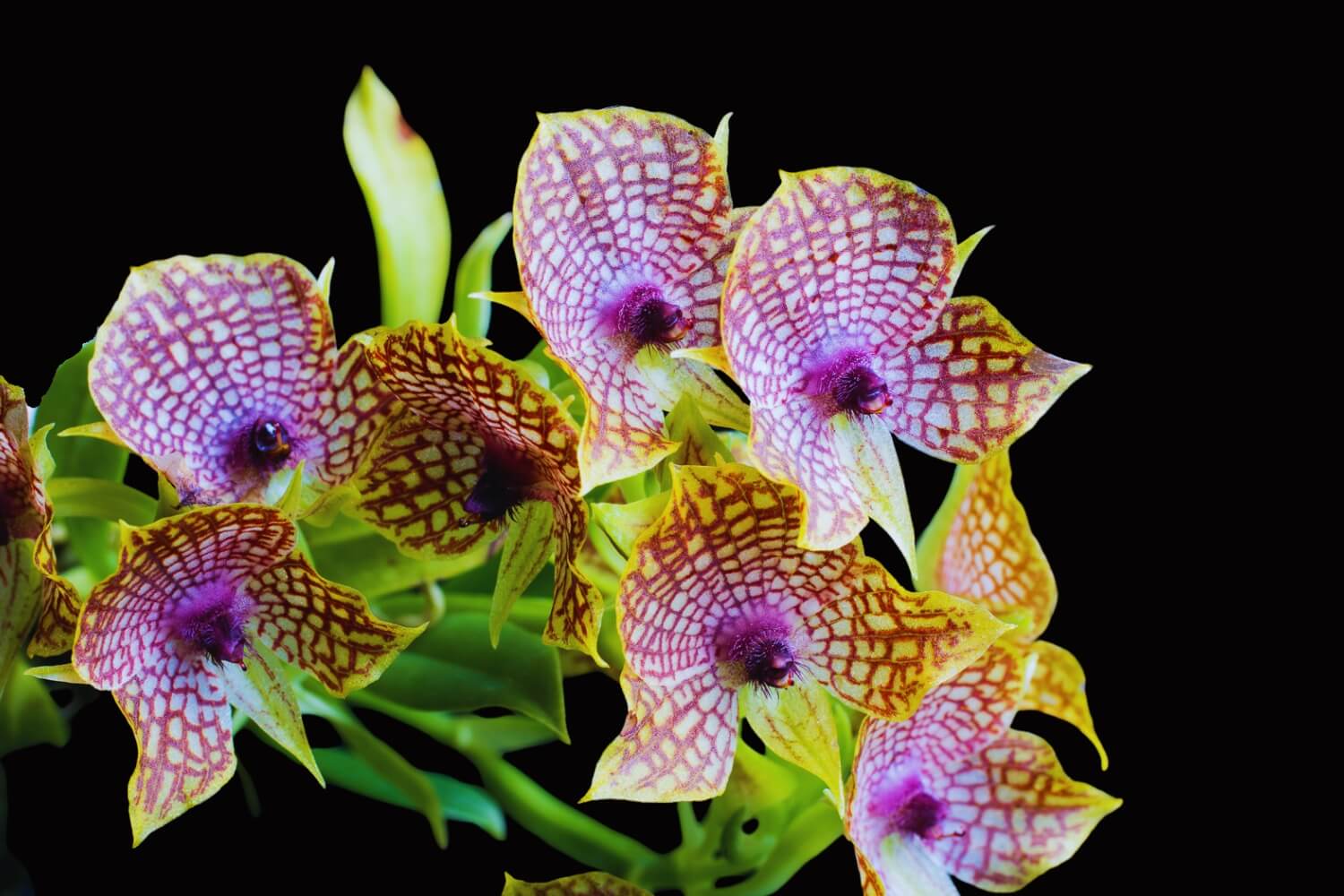
This Orchid has a very long, hard rhizome with many long and numerous adventitious roots, oval pseudobulbs, very spacious, always partially visible, with few leaf wrappers, fleshy, elliptical and flat. The flowers have large petals and dorsal sepals, approximately the same size, or sometimes the largest petals, while the lateral sepals generally fuse at the base or along the entire length, forming a sacchy-shaped spur, always shorter than the ovary. The lip is simple, generally having the same color as the petals and sepals, with a middle lobe with a bilobed end, with a pocket either welded or free on the ventral side of the column. The column is quite short, with two extensions of the pubescent margins to trim the sides of the anther, and two appendages below it to form a sort of tube leading to the stigma. The anther is apical, unilocular, with two pollinia.
Distribution: It is found in the regions of Cusco, San Martin, from 1700 to 2200 masl.
Habitat: In the cloud forest, it grows on sunny and shady slopes with high humidity.
Blooming season: April to June
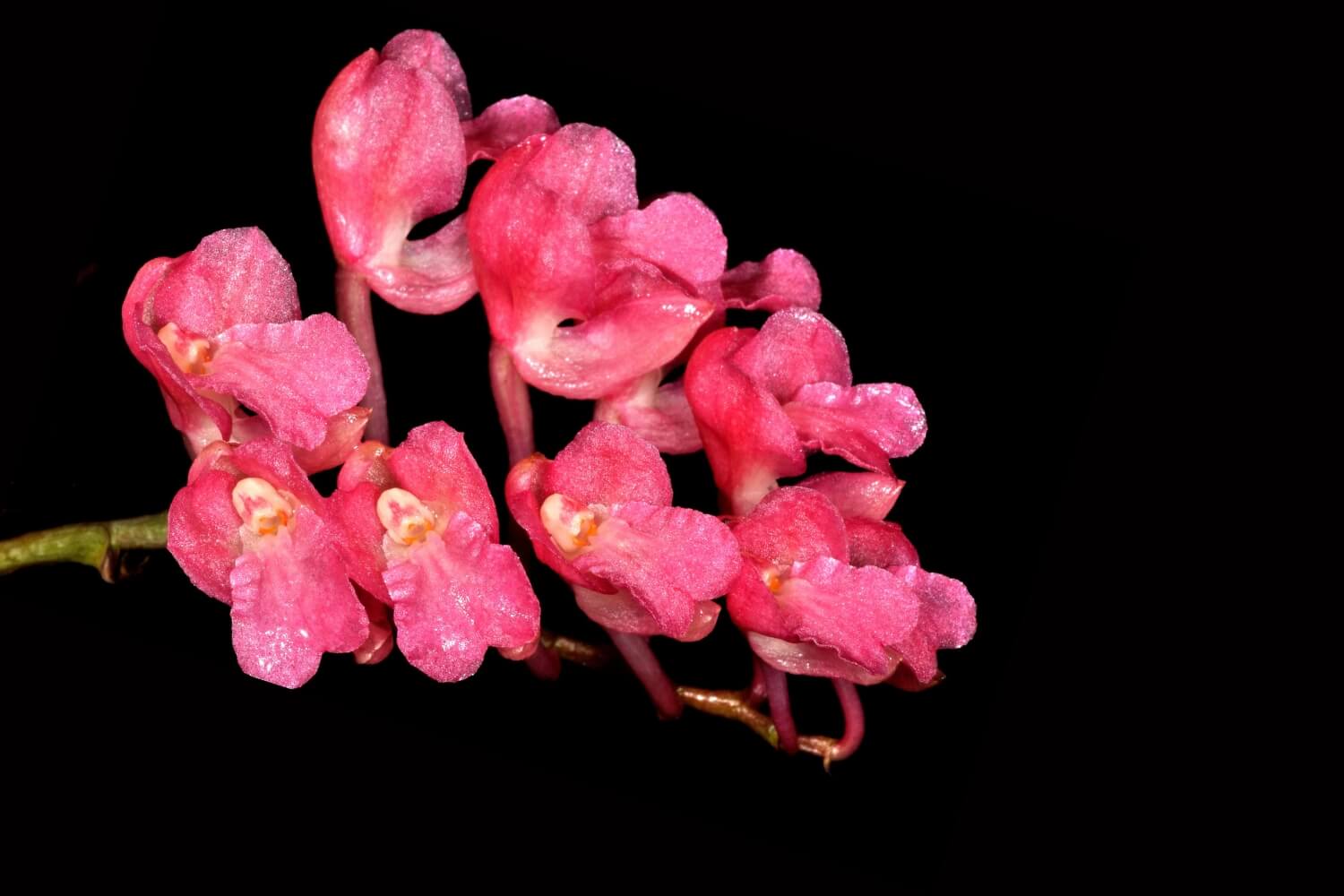
This orchid is 40-80 cm high, robust. Basal leaves 10-30 cm, linear-elliptic, pseudopetiolate. Floral scape with broad, acute, glabrous cauline leaves. Inflorescence 10-20 cm long, cylindrical, sometimes pyramidal; rachis, bracts and outer part of the flower covered with short, glandular pubescence. Dorsal sepal triangular, acuminate, concave at the bottom; lateral sepals narrowly ovate, acute. Petals linear-triangular, with wavy edges. Lip up to 4.6 cm long, oblong, subpanduriform acute to subacute, with double concavity; in the center, and touching the upper part of the lateral calluses, a line of non-glandular hairs, the lateral calluses pubescent on both sides. Column 9-10 mm long; reflex anther.
Distribution: It is found in the regions of Cusco, San Martin, from 1200 to 2400 masl.
Habitat: In the cloud forest, it grows on sunny and shady slopes with high humidity.
Blooming season: May to August
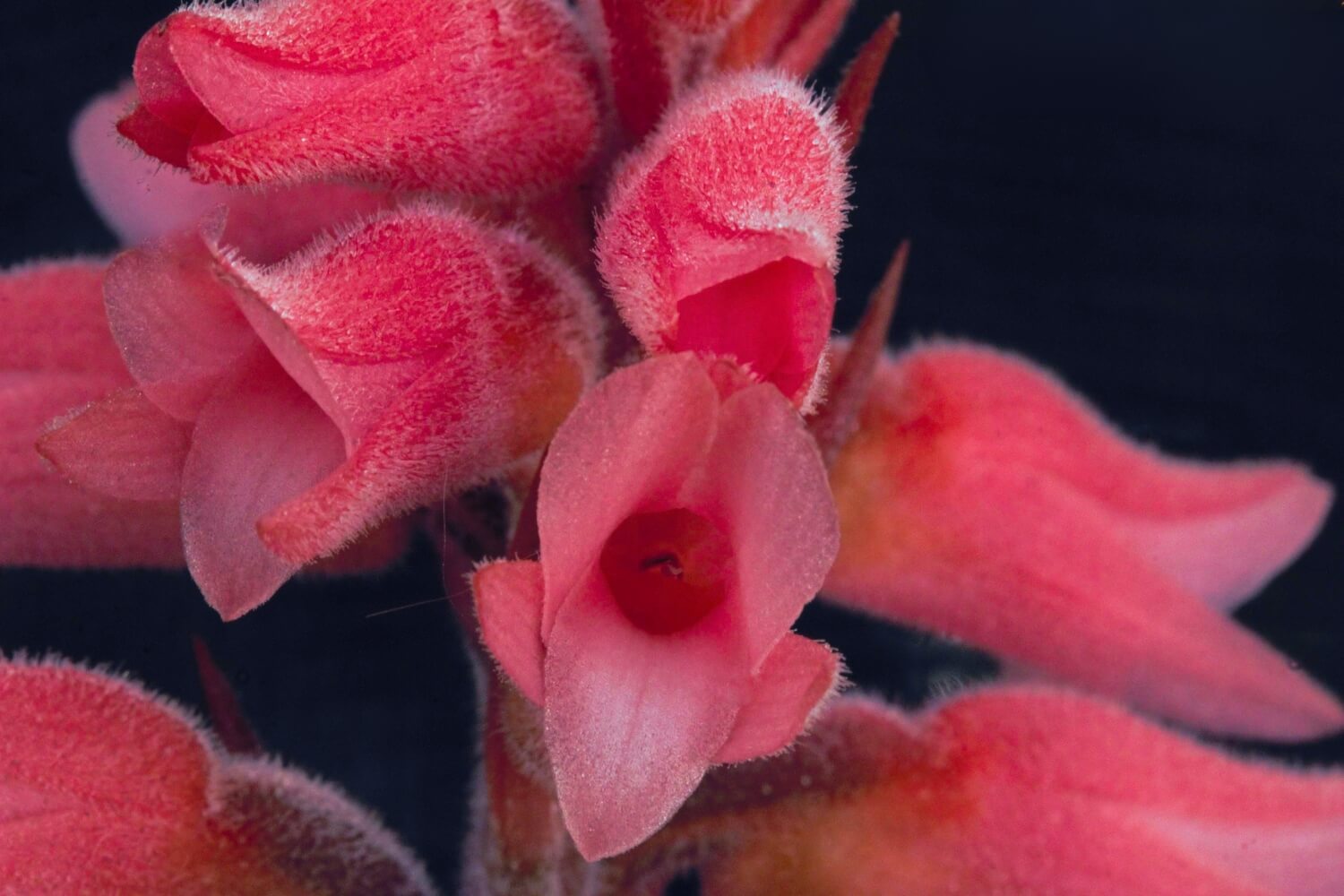

Visit the beautiful Amazon jungle of Tambopata in South America and enjoy the most impressive natural spectacle, we are referring to the blue and yellow macaw clay lick. Accompanied by the best local guides.

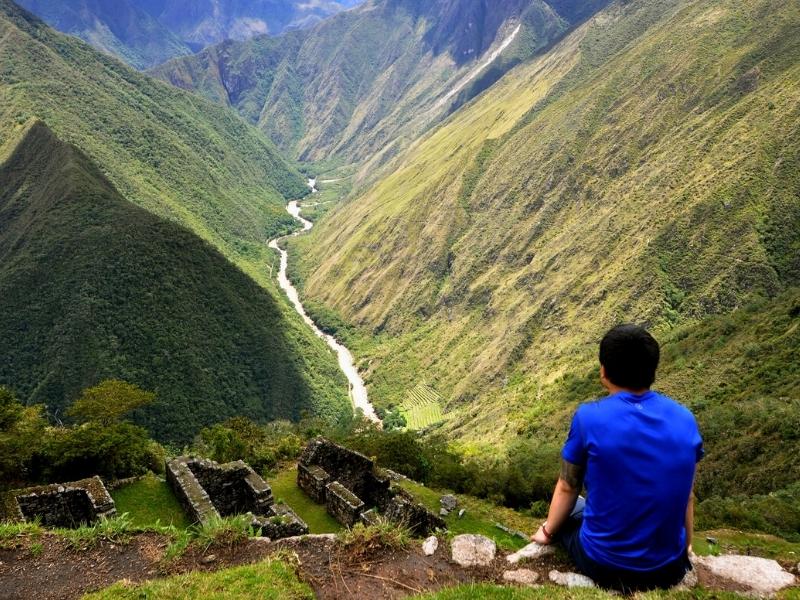
Explore the Manu Amazon Rainforest & Inca Trail hike to Machu Picchu, you will enjoy the best adventures in Peru, exploring amazing inca trail routes and the best amazon wildlife with our local tour guides, in small groups.

Dive deep into the culture and landscapes of Peru with this adventure to Machu Picchu, the Amazon and more. Search for wildlife along jungle trails and rivers in the rainforest from a comfortable lodge then head up into the Andes to Cusco, the capital of the Inca empire.

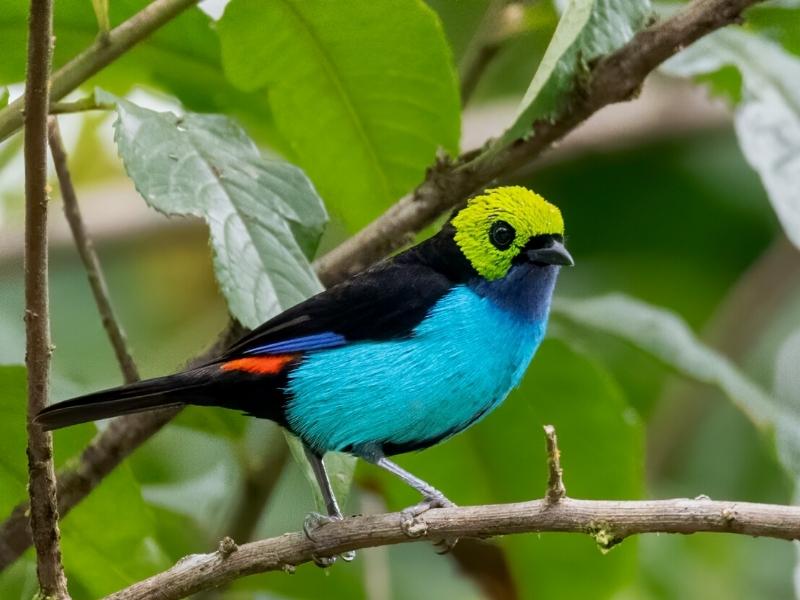
Manu National Park is located in the Amazon rainforest of Peru. This attraction is one of the few places on the planet that still maintains its great biodiversity of birds, mammals, reptiles and many medicinal plants.


The Manu Jungle tour goes to one of the largest life biosphere reserves in the World. You will enjoy wildlife, traditional villages, with the best specialized guides.

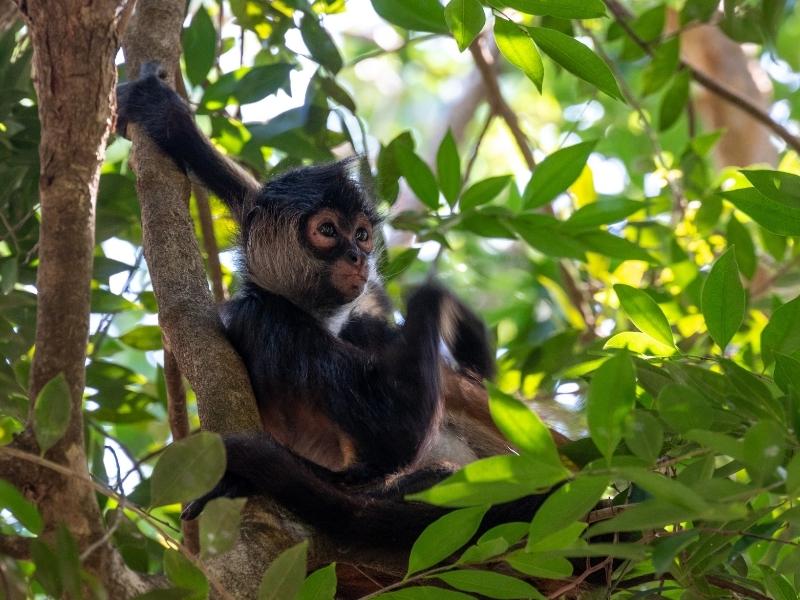
Manu National Park is an excellent way to experience an intense amazon wildlife.Is the biggest Amazon rainforest in the Americas, its incomparable natural wealth, host the greatest amount of flora and fauna of the world.
